How to
5 Things Your 5-Year-Old Should Know
Personal info, safety plans, triple 000, what else? Read on for our checklist of five things every five year old should know 👇
Early childhood is full of exciting milestones and unforgettable moments. However, while learning ABCs and 123s is a must, it’s also vital to keep safety education front of mind. Therefore, actively educating your child around safety plans and stranger danger provides foundational skills for a happy and healthy childhood.
In this post, we list five crucial things every 5-year-old should know. Additionally, we’ll explore why paediatricians stress the importance of children knowing vital information from their personal details to calling triple zero in an emergency.
1. Personal Information
By age five, children should know their basic contact details:
- Full name
- Date of birth
- Parents’ full name
- Home address
- One or both parents’ mobile phone numbers (if you don’t have a home phone)
While names and addresses are much easier to memorise, phone numbers present new challenges. You can sing the numbers out with your child or invite them to write them down in sand or mud. Otherwise, lean on muscle memory by encouraging your child to pretend dial on a number pad drawn on paper or cardboard.
Moreover, keep your phone number regularly in sight, such as on the fridge or hanging on a poster in your child’s room. Regularly invite them to sound it out, whether through singing, dancing, or making a story out of it – whatever it takes!
Alternatively, you can sew a patch containing your contact details inside your child’s clothes. Just be sure to remind your child frequently where it is, so they can share the information if needed.
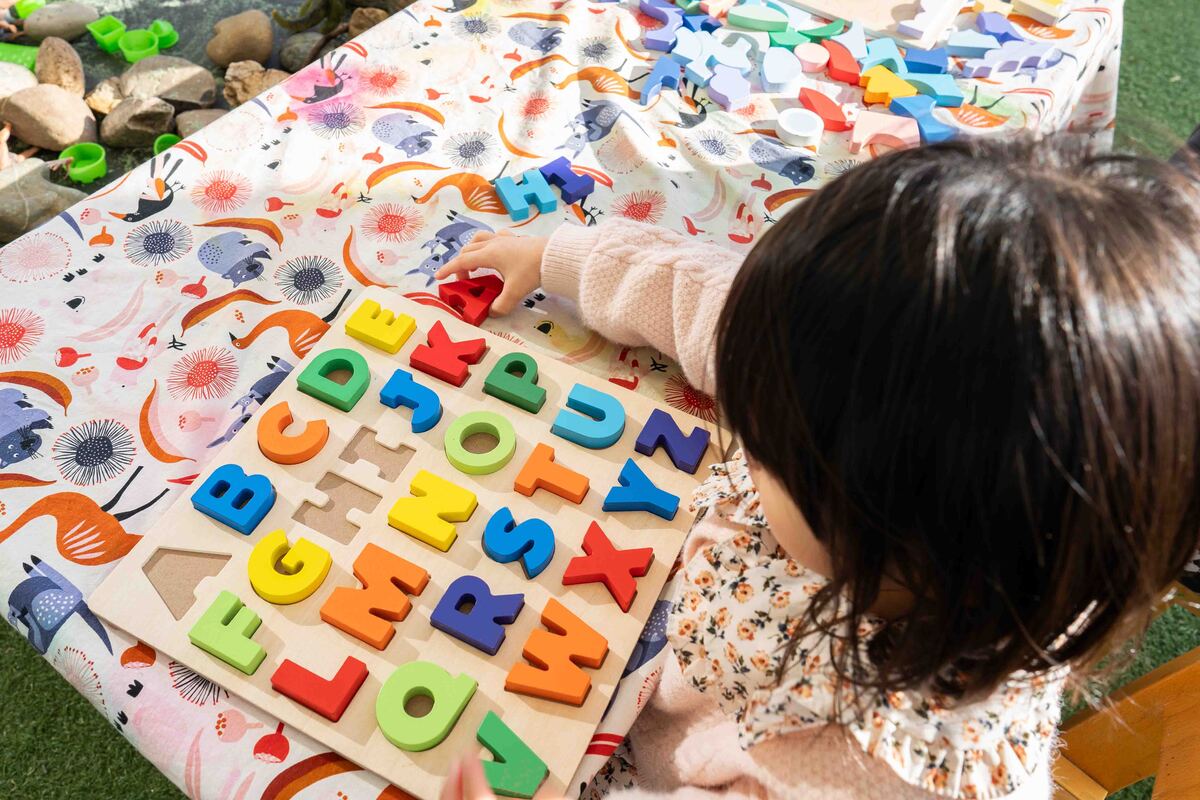
2. Safety Plan
Children getting lost is a common concern for parents, so preparing a safety plan is essential. Firstly, have a calm discussion with your child about what to do if they get lost. However, try not to scare them!
Children’s vivid imaginations may sometimes lead to anxiety. It’s important to be firm yet reassuring in safety education – there’s no need for unnecessary worry for you or your child.
The best safety plans are clear, concise, and easy to remember for the whole family:
- Stop: Remain calm, look around, and assess the situation.
- Find a safe space: This should be away from traffic, bodies of water, high places, or dangerous machines.
- Call out for your parents/caregivers by name: It’s crucial that your child avoids shouting ‘mummy’ or ‘daddy’ in public places, such as shopping centres or supermarkets, to prevent confusion if they get lost (especially if it’s somewhere full of other children). As part of your safety plan, remind them to call out for help in various environments, including quieter places like libraries or theatres. Since children may feel embarrassed, consistently stress that their safety is the utmost priority.
- Look for a mum with children or seek out staff: When your child is in a crowded place and gets lost, encourage them to look for staff members or other mums with children. Teach them to confidently identify and speak with staff for assistance. Emphasise this safety measure regularly when you’re out together. Alternatively, guide your child to seek help from a mother with children. Children tend to feel more secure around their peers and women are statistically more likely to assist lost children.
Additionally, plan a designated meeting spot at every event you attend. This could be a help desk, a ride at an amusement park, or a fountain at the park. However, teaching them which strangers to trust and which to avoid presents challenges around stranger danger.
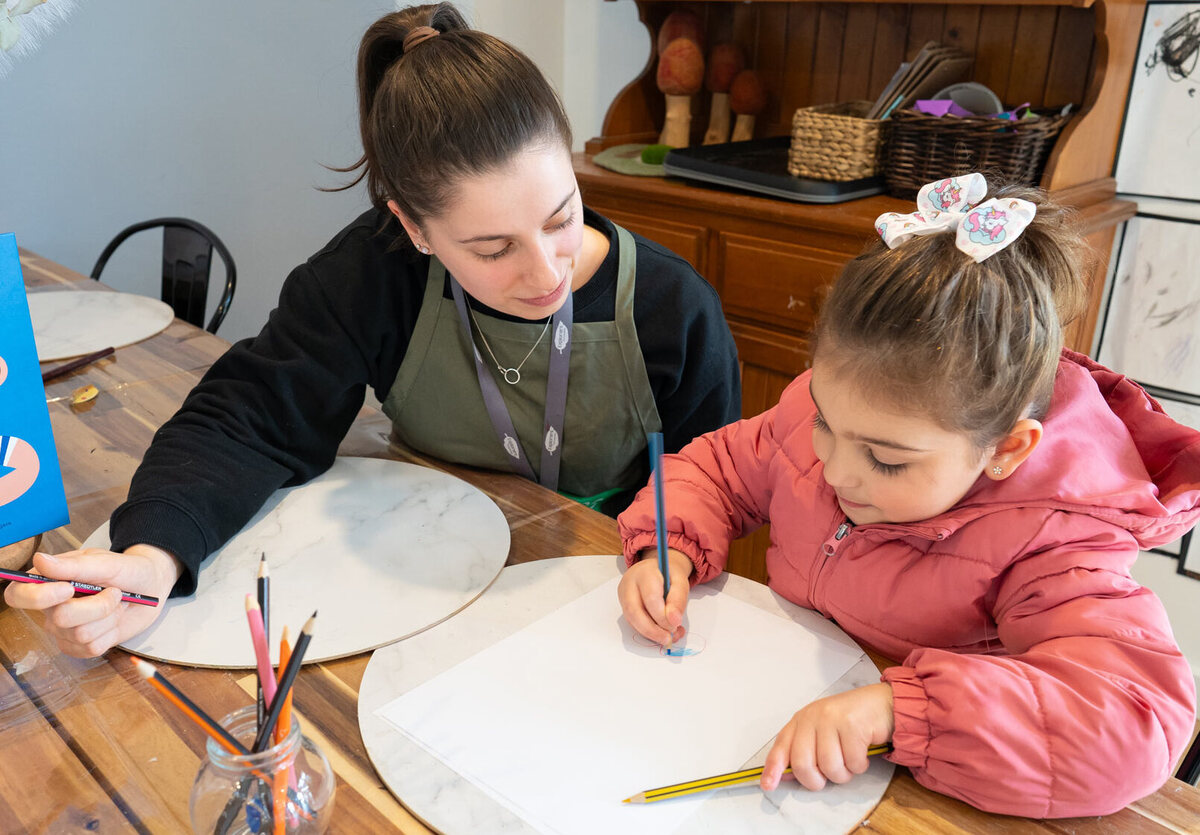
3. Stranger Danger
By age five, children should have an understanding of stranger danger. This is especially important as they enter primary school and begin venturing into social situations (birthday parties, school excursions, etc.) outside of your supervision.
Firstly, calmly discuss what a stranger is with your child. You should be as broad as you can with this definition – a stranger is anyone your family doesn’t know. Stress to your child that if they are alone with an adult they don’t know, they should always exercise caution.
Then, outline the stranger danger guidelines:
- Never take food or drinks from strangers.
- Never answer the door without adult supervision
- Never let a stranger into the house.
- Never get into a stranger’s car, house, or follow them without a parent or trusted guardian present.
- Stress the importance of saying NO if a stranger is making them uncomfortable – run away and shout if they’re feeling uncomfortable or in danger and immediately seek out a trusted adult.
4. How to Call 000 in an Emergency
Teaching children how to respond in emergency situations is a vital life skill. Make sure they understand the significance of the emergency number – 000. Luckily for us Aussies, this is an incredibly easy number to remember, and be sure to regularly remind your child about it. Guide them through basic scenarios and role-play what to do in an emergency.
You can also make a game out of it by using the Government’s official Triple Zero Kids’ Challenge app! This makes learning the ins and outs of calling triple zero fun and memorable for children.
However, also stress that it should only be used in an emergency. Making joke calls or deliberately misusing triple zero is against the law and might land you a hefty fine.
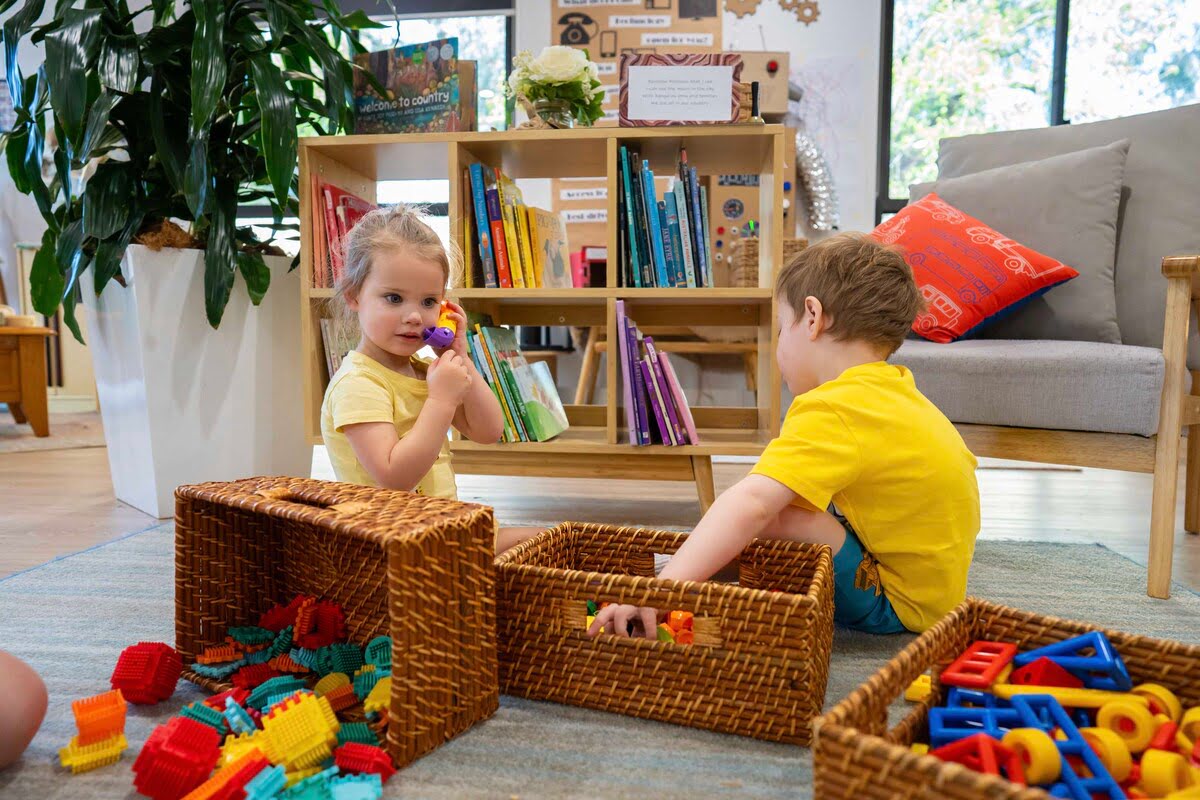
5. Allergies (Their Own or Siblings)
While food allergies can develop at any age, 75% develop before age five. Therefore, if you’re already aware of your child’s food allergies, and it’s a serious allergy, be sure to regularly remind your child of their condition. Additionally, remind them what will happen if they do eat – or in some cases merely come into contact with – their allergen.
This is doubly important for children with siblings who have anaphylactic allergies. As children embark on primary school, birthday parties, and social outings, it’s vital they remember what allergies are, what kinds of foods it may be in, and how to assert themselves in social situations. It’s okay to say no or to remind adults or caregivers of children’s allergies if they suspect it may be in the food they’re about to consume. Also, be sure to regularly go through role plays and drills, especially if they carry an EpiPen.
To learn more about allergens and how to introduce them to toddlers, check out our blog post here.
In conclusion, teaching your 5-year-olds the safety essentials doesn’t have to be daunting. With the right approach and a calm voice, you can inform your child of everything they need to know for a safe and fulfilling childhood.
Remember – preparation is the best defence. Whether you make a song of dance of remembering their phone number or role play calling triple zero, you can take a few easy steps to keep your child happy and safe well into adolescence and beyond.
🍃 To tour one of our beautiful Centres, please click here. Otherwise, check out our website at Explorers Early Learning today!
An Explorers Guide: What to Pack for Childcare
Is the first day of childcare sneaking up on you? Check out our list of must-pack items to ensure a smooth start to early childhood education 👇
After touring the Centre, filling out the forms, and meeting your child’s Educators, the first day of childcare will come before you know it. Although Explorers Early Learning provides the essentials, there’s still children’s individual, medical, and emotional needs to consider.
So, what do you need to pack for your child for childcare?
In this post, we provide a must-read checklist of what to pack for childcare, detailing everything your child needs for a seamless start to this exciting first step in their education journeys!
What Do We Provide?
Explorers offers the following essentials for all the Little Explorers in our care:
- All meals (breakfast, morning tea, lunch, afternoon tea, and a late snack)
- Nappies
- Wipes
- Sunscreen
- Children’s bedding
- S26 Formula (if required)

What Do You Need to Pack for Childcare?
Each child possesses unique cherished items, medical needs, and individual considerations. Therefore, make a checklist of the following items in the weeks leading up to their first day.
Not every item will apply to each child, so it’s crucial to consider various items and clothing, especially for children enrolled five days per week.
Remember to clearly label your child’s belongings!
- Milk bottles and formula/breast milk (if required): Hand breast milk directly to our friendly staff for proper storage; please avoid leaving it in your child’s bag.
- Security/comfort items: This might be a stuffed animal, sentimental blanket, or extra special toy that your child may need for comfort, particularly for sleep times.
- A reusable water bottle filled with water only: We encourage water consumption at Explorers. Pack a clean water bottle for refills throughout the day, but remember to take it home daily for cleaning.
- Nappy cream (if required): Sudocrem is preferred. If not, please ensure your nappy cream is nut-free!
- A sleeping bag: If preferred, you can pack a sleeping bag for your child. Alternatively, Explorers will provide bedding.
- A complete change of clothes: This is essential as our Little Explorers engage in indoor play, outdoor play, and messy play. We ask that children do not wear singlets or open-toed shoes in summer. Children in toilet training should bring three extra sets of clothes and an additional pair of shoes.
- A warm jumper, woolly hat, and jacket for cooler weather: We love getting our Little Explorers out into nature, even in the colder months. Therefore, pack plenty of warm clothing as the chill sets in. Beanies are a favourite, which we provide!
- A wide-brimmed hat or legionnaires hat: Baseball caps provide little coverage during those scorching summers, so please pack a wide-brimmed hat instead.
- The Explorers Wet Bag (provided by Explorers): With all that outdoor play, children are bound to get wet from time to time. We’ve got you covered, just remember to bring a spare set.
- The Explorers Belonging Bag (provided by Explorers): Clearly label all items – you don’t want anything getting lost!
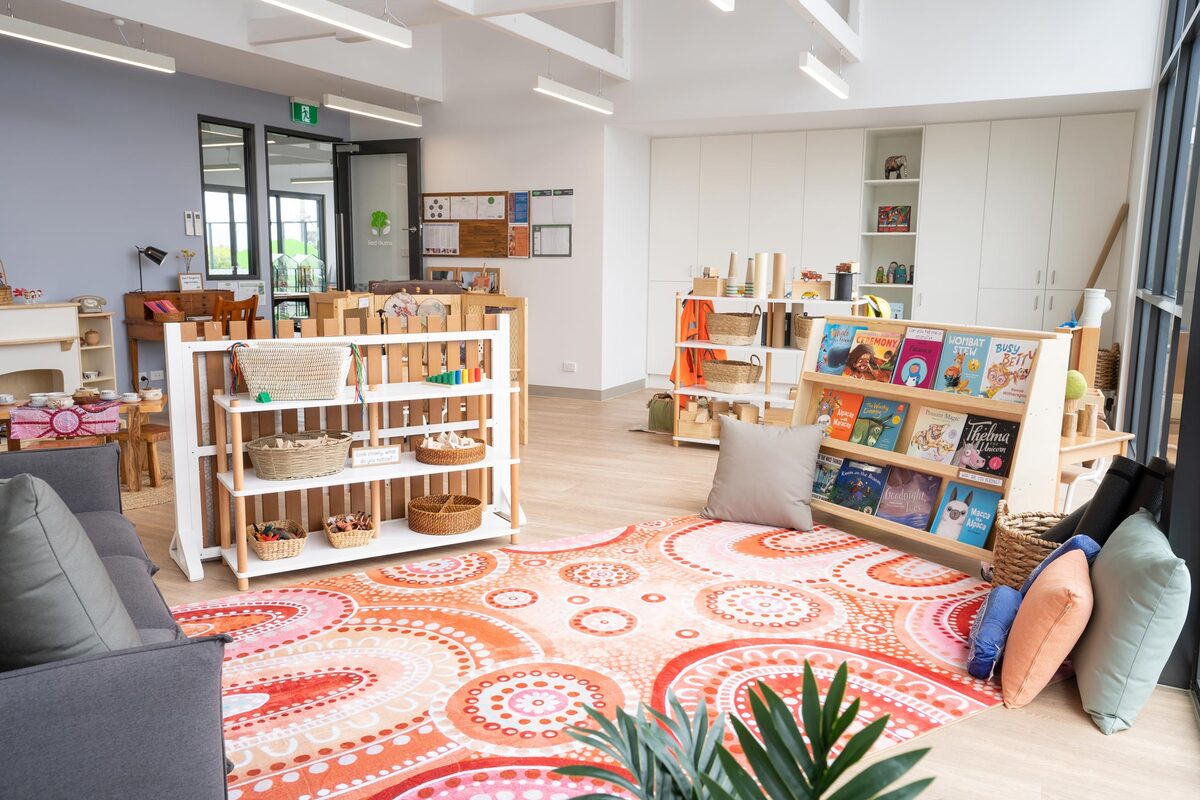
Do You Need to Pack Food or Meals?
Please do not pack any snacks or meals for your child. This is for the safety of all children, Educators, and visitors at the Centre who may have allergies and/or intolerances.
But rest assured, our brilliant chefs prepare all meals with loads of fresh ingredients, ensuring your child won’t go hungry!
What if Your Child Requires Prescription Medication?
If your child requires prescription medication throughout the day, please hand it directly to your child’s Room Leader and speak with reception to fill out the necessary forms. Please do not pack the medication along with your child’s other belongings – this is for children’s safety.
With all these considerations in mind, write out a checklist and speak with your child before the first day regarding each item in their bag. Let them know where everything is and why it’s there, particularly for their comfort items.
Likewise, be sure to speak with our knowledgeable and friendly Educators if you have any concerns. Above all, try not to worry – your child is in good hands. Not only is safety the number one priority at Explorers, they’ll also be receiving premium quality early childhood education to set them up for a lifetime love of learning and exploration.
🍃 To tour one of our beautiful Centres, please click here. Otherwise, check out our website at Explorers Early Learning today!
9 Sustainable DIY Christmas Decorations for Your Family
Tired of the same old plastic, store-bought gifts? Check out our list of sustainable Christmas decorations that won’t hurt the planet 👇
It’s the festive season again, and that means one thing – decorations! While it’s tempting to deck out the house with lights and store-bought ornaments, they’re not always the most sustainable choice. So why not take matters into your own hands this Christmas?
Through these do-it-yourself (DIY) projects, you and your child can spend some quality time together while also reducing your Christmas carbon footprint.
So, here are our top 9 sustainable (and budget-friendly) DIY Christmas decorations for you and your family this festive season!
1. Recycled Paper Ornaments
Do you have spare paper lying around the house? You’d be surprised how much you might find stuffed in drawers or hiding in the back of cupboards. Your child can help by searching the house for:
- Old newspapers
- Magazines
- Junk mail
- Grocery receipts
- Used wrapping paper
Once you’ve got your desired paper, recycle it by cutting it into festive shapes, layer them, and secure them together with non-toxic glue. Then, simply punch a hole through, string them together, and invite your child to write a small message to make it extra special.
Once complete, hang it from the tree and you’ve got unique, conversation-starting decorations!
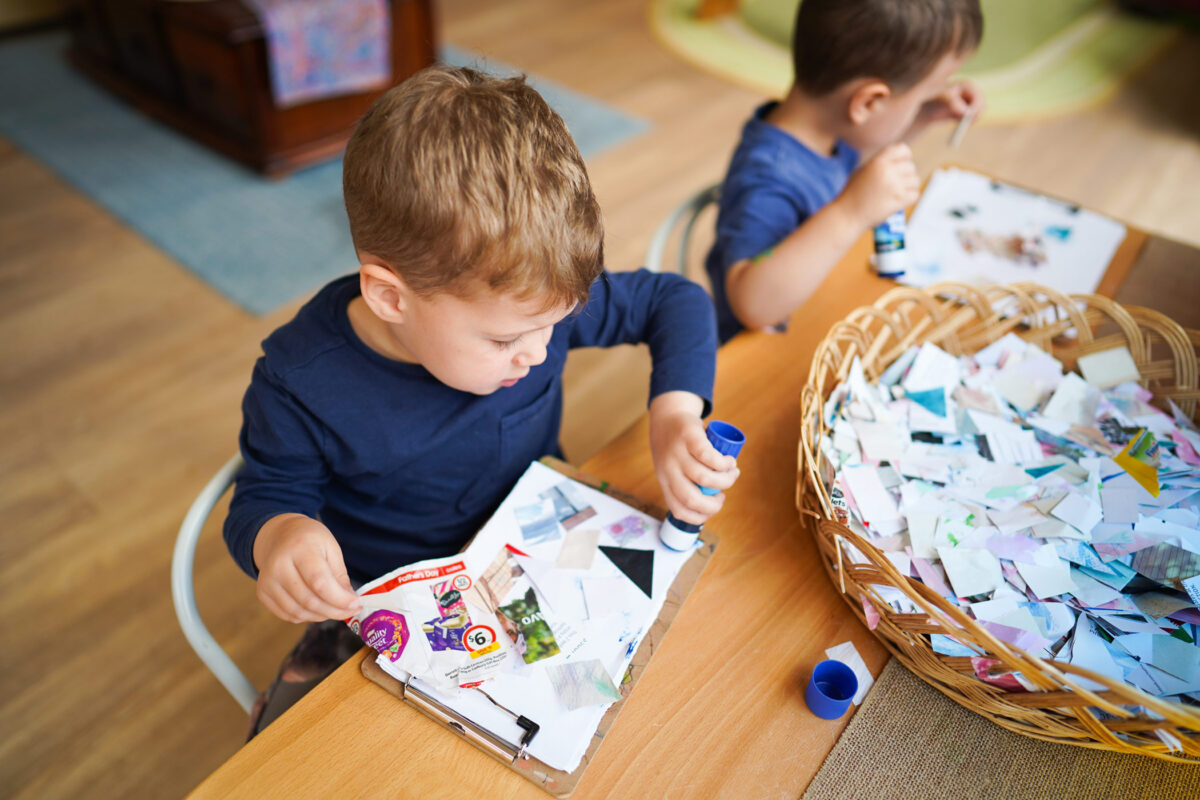
2. Upcycled Glass Jar Lanterns
Don’t throw out that jam jar! Instead, remove any labels, wash it with soapy water, and leave it out to dry. Then, you and your child can use child-friendly paint to draw Christmassy shapes such as reindeer or wise men’s stars. Alternatively, you can decorate the jar with festive ribbons, string, or even googly eyes.
After your jar is clean and decorated, just add a tea light candle inside for a cozy finishing touch. These upcycled jar lanterns help reduce waste and allow your child to express their creativity.
3. Homemade Wreaths
Collect fallen pinecones, twigs, leaves, or seed pods from your backyard or the park to create a natural and rustic DIY wreath.
Once you’ve gathered the materials, all you need to do is cut a hole in some old cardboard and glue them on. You can them customise your DIY wreath with a festive bow or homemade ornaments. Finally, hang on your front door or around the house for a subtle festive touch.
4. Repurposed Wine Cork Ornaments
Don’t bin the corks after your next cheese and wine night. Instead, use them as a basis for some unique Christmas decorations. Paint and decorate them as reindeer, snowmen, elves, or Mr. and Mr Claus! Cotton wool is perfect for hair or Santa’s bushy white beard.
When you’re finished, add your cork creations to shelves, tables, or run a string through them to hang from the Christmas tree for sentimental and sustainable mementos for years to come.
5. Clothespin Snowflakes
Do you have more wooden clothespins than you could ever use? With a few simple steps, you can transform these into unique tree decorations!
Start by gluing the clothespins together in a radial pattern so they resemble snowflakes. Then, you and your child can paint them white and aqua with water-based paints. Once they’re dry, run a string through the tip of one of the pins and you’ve got eco-friendly additions to the tree!
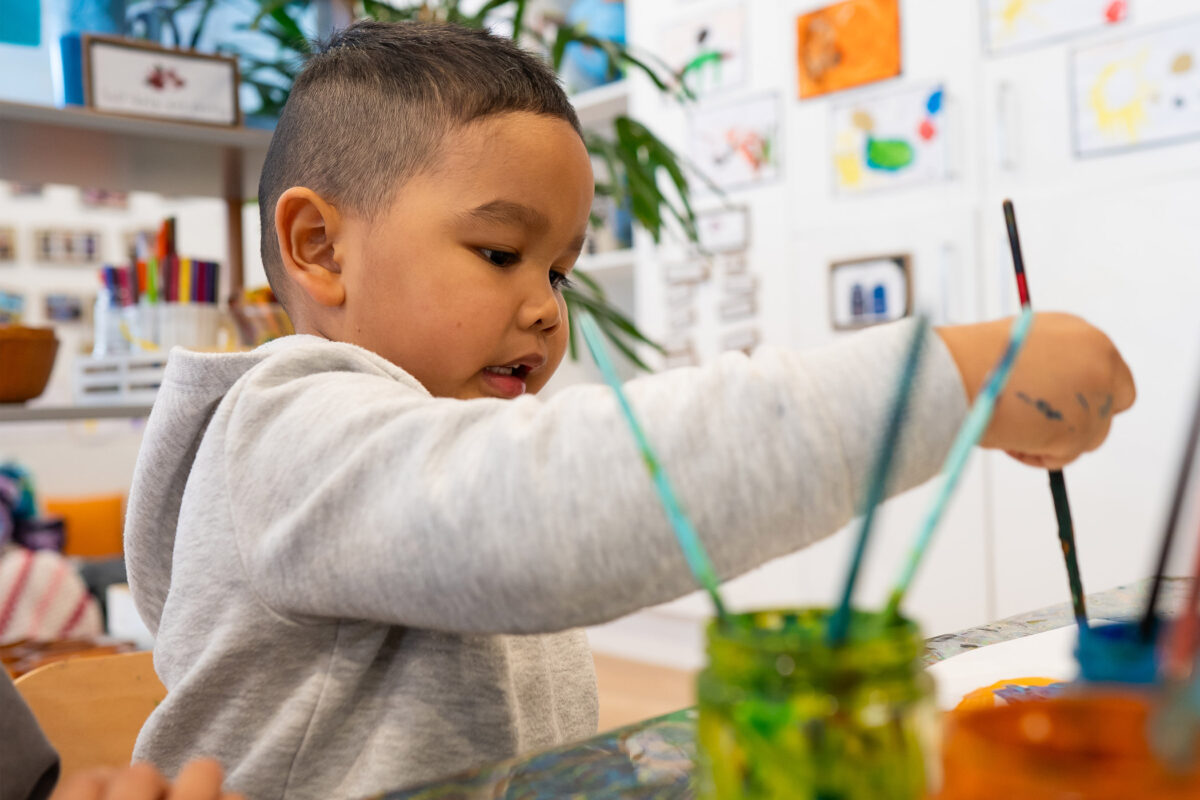
6. Cardboard Christmas Tree
While this might not replace the pine tree just yet, a cardboard Christmas tree is a wonderful addition to a child’s room, coffee table, or living room. Instead of purchasing a mini plastic tree, gather some old cardboard from around the house to construct your own.
Start by drawing out four Christmas tree stencils on cardboard, then carefully cut them out. After you’ve glued them together, invite your child to help paint it green, white, or whichever colour you wish. Decorate it with buttons, ribbons, or anything festive you can find – and don’t forget to put some presents under it!
7. Dried Orange Decorations
This unique festive decoration is a must-have this Christmas. Simply cut a couple of oranges into slices and squeeze as much fresh juice as you can to enjoy. Instead of throwing out the leftover slices, dry them off and place in an oven at 93°C for 2-4 hours, flipping every thirty minutes. Once dried, place on a cooling rack until they’re at room temperature.
Afterwards, pierce your slices with a needle and string them together. Hang them over a fireplace, from shelves, or anywhere around the house for a touch of colour that can easily be preserved in air-safe containers for next year. Alternatively, they’re perfect for compost!
8. Oven Mitt Christmas Stockings
At the end of the day, Christmas stockings exist to hold presents. In other words, children don’t really care what shape they are, so long as they’re filled with goodies! So, why not upcycle an old oven mitt lying around the house or from an op shop and spice it up with a festive touch?
Simply glue on old buttons, add ribbons, or sew on festive fabric shapes and voila – you’ve got yourself a makeshift Christmas stocking!
9. Fabric Scrap Garland
Repurpose old clothing and tea towels into a colourful – and eco-friendly – fabric scrap garland. Begin by cutting your fabric of choice into festive shapes, triangles, or anything you think will brighten up the house. Feel free to get creative and invite your child to help brainstorm shapes and sizes while you use the scissors.
Then, pierce a needle through each and string them together. These are perfect for above the fireplace, over the television, across a bookshelf, or anywhere in the house that needs a burst of Christmas cheer.
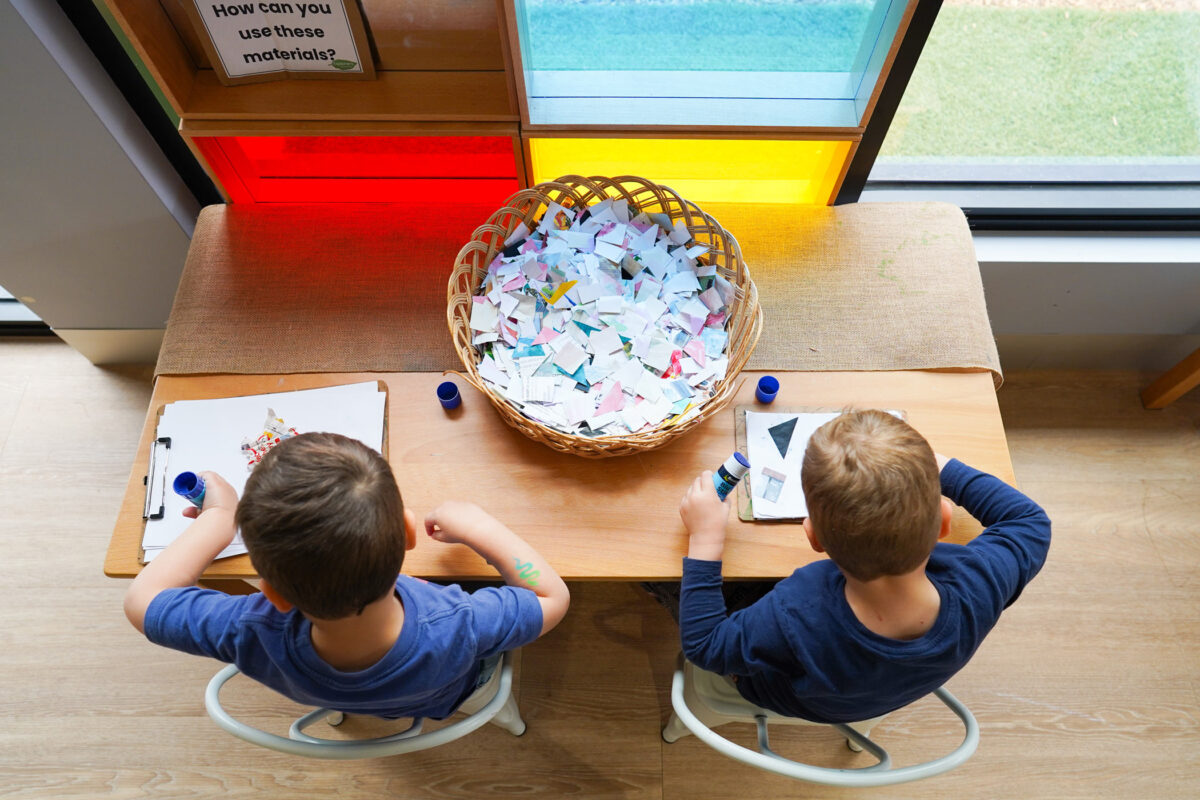
Ultimately, Christmas doesn’t have to be a time of excess and needless waste. Rather, by following some – or all – of the items in our list, you can decorate the tree and brighten up your home for the festive season. Better yet, you can do so without spending a fortune on plastic, mass-produced decorations.
So why not get crafty this Christmas and create some special decorations that you can look back on in years to come? And who knows, maybe someday that oven mitt Christmas stocking might just become a family heirloom!
Merry Christmas 🎅
🍃 To tour one of our beautiful Centres, please click here. Otherwise, check out our website at Explorers Early Learning today!
10 Essential Tips for Flying with Toddlers and Young Children
Worried about how your toddler will fare up in the air? Read on for our must-read tips from packing to landing 🛫
Planning a family holiday interstate or overseas is a buzz of anticipation and excitement. However, it also presents challenges if you have a toddler in tow. From squishy cabins to long lines, flying with toddlers and young children can take a heavy toll on the whole family.
However, many stressful flights with toddlers often arise from poor planning or little preparation. So, we’ve compiled a handy list of tips and tricks to ensure you and your toddler are fully prepared for take-off this holiday season!
1. Fly Direct (If You Can)
While it may seem like a good idea to have a layover where your toddler can rest up between long flights – or burn off energy – it may only compound the issue as they have to relive the experience all over again. And if you’re doing the same on return, what could be two flights suddenly balloons to four, five, or as many as six. And when you have a fidgety toddler, every minute in the air counts.
Therefore, fly direct if you have the choice. This increases the likelihood of a stress-free flight as your toddler may sleep for most, if not all, of the trip. And if your toddler is having a hard time, it’s better to get it over and done with.
2. Get up Early (Or Fly Nights)
If your toddler’s an early riser, try to book an early departure (if possible). This lessens the likelihood of delays, which can be stressful whether you’re four or forty. According to the Huffington Post and AirHelp, delays peak at around 6pm, and are at their lowest between 6am – 11am. This is largely due to less runway traffic, more planes ready to fly from the night before, and less planes in the air overall.
Conversely, if you’re traveling long-haul, consider a late-night flight. This can work in your favour as toddlers will be exhausted from a long day of packing and prepping. If you’re lucky, they’ll sleep through the whole thing!
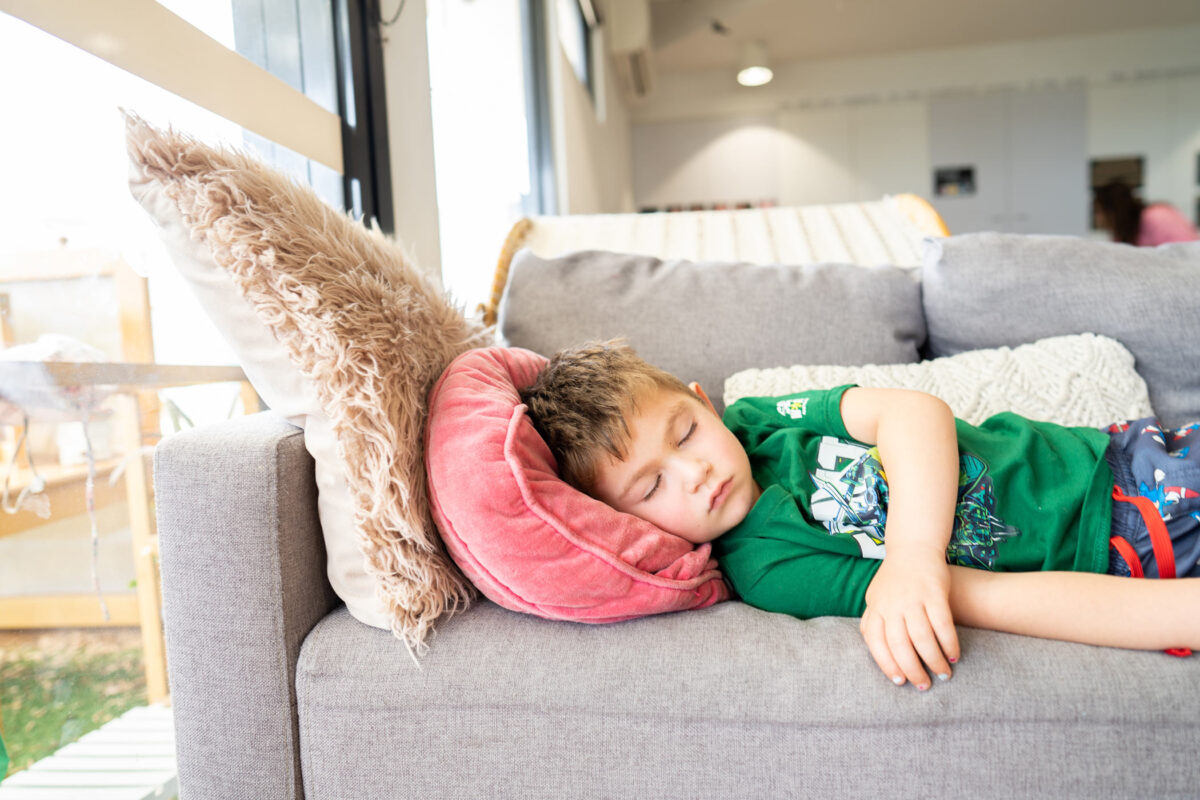
3. Wear Comfy Clothing
Dress your toddler in comfortable layers for the flight. Airplane cabins can vary in temperature, so having extra layers allows you to adjust accordingly – this applies to parents too!
Moreover, consider packing a familiar blanket or stuffed animal for added comfort and a sense of security, along with any special pillows or neck cushions to ensure your toddler gets their rest.
4. Consider the Window Seat
While the aisle seat provides easier access to the bathroom, it isn’t ideal for young children.
Often, toddlers don’t quite know how to keep their hands and feet to themselves. Therefore, they might dangle them in the aisles and accidently knock passing passengers or flight attendants. Importantly, this can be dangerous if they’re carrying hot food or drinks. At the very least it’ll lead to some awkward apologies if your toddler kicks a stranger.
Consider seating your toddler by a window to keep them entertained. Alternatively, a seat between two parents/guardians shares the responsibility of keeping them busy.
5. Pack Healthy Snacks
While most airlines will provide meals on longer flights, it’s a good idea to pack extra snacks and drinks for your toddler with plenty of variety. Additionally, be sure to pack healthy options along with a few treats to keep them satisfied during the flight and don’t forget a spill-proof cup to avoid any potential messes.
However, keep your toddler’s nutrition in mind when packing snacks. Foods high in sugar are likely to cause sugar highs and crashes, so try to bring snacks high in protein and healthy fats and minimise sweets.
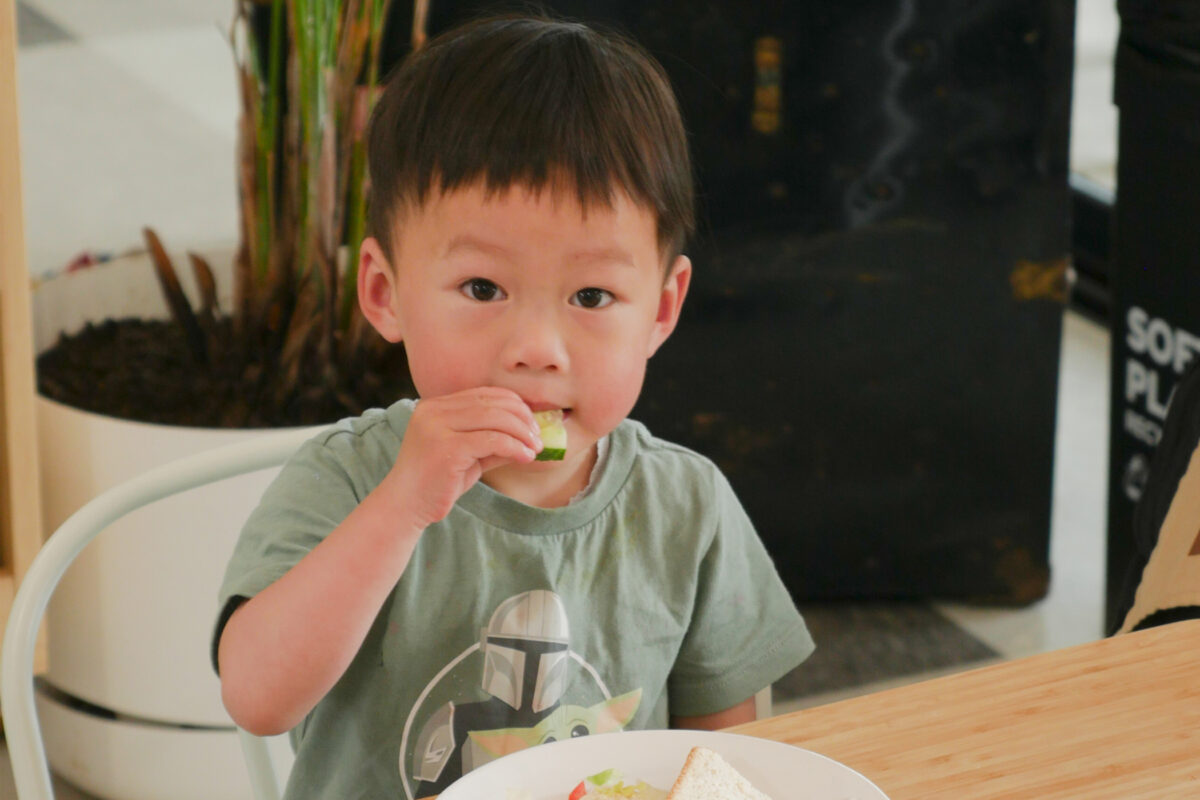
6. Remember – Entertainment is Key
When flying with toddlers, activities are a great way to spark excitement and – most importantly – serve as an educational distraction during those long flights. A little novelty goes a long way for a two-year-old and something as simple as a busy book, colouring activity, sticker book, or magnetic drawing board can do wonders for those long and sometimes arduous flights.
Many airlines provide free children’s packs that might contain some activity books and small toys. If you’re not sure, it never hurts to ask your flight attendant.
Additionally, while too much screen time can impact toddlers long-term, the occasional longer stint isn’t the end of the world – especially if it keeps your toddler calm and you sane on a long flight! If you find your toddler loves watching educational YouTube videos or colouring in on an iPad, try not to feel guilty – just be sure to bring toddler-friendly headphones.
7. Talk to Your Toddler Beforehand
As is the case with many toddlers’ outbursts, much of the anxiety arises from experiencing something unexpected. Therefore, if you leave your toddler in the dark, they won’t be mentally or emotionally prepared for the experience.
Instead, have a sit down and talk with your toddler about exactly what to expect. Map out the journey from packing to landing. It’s a pretty exciting and amazing experience for toddlers, so try and lean into the fantastical and exciting elements. Picture books are a handy way to build on the discussion and spark excitement:
- Maisy Goes by Plane by Lucy Cousins
- Hello World! Planes and Other Flying Machines by Jill McDonald
- Where Do Jet Planes Sleep at Night by Brianna Caplan Sayres
- Little World: At the Airport by Ladybird
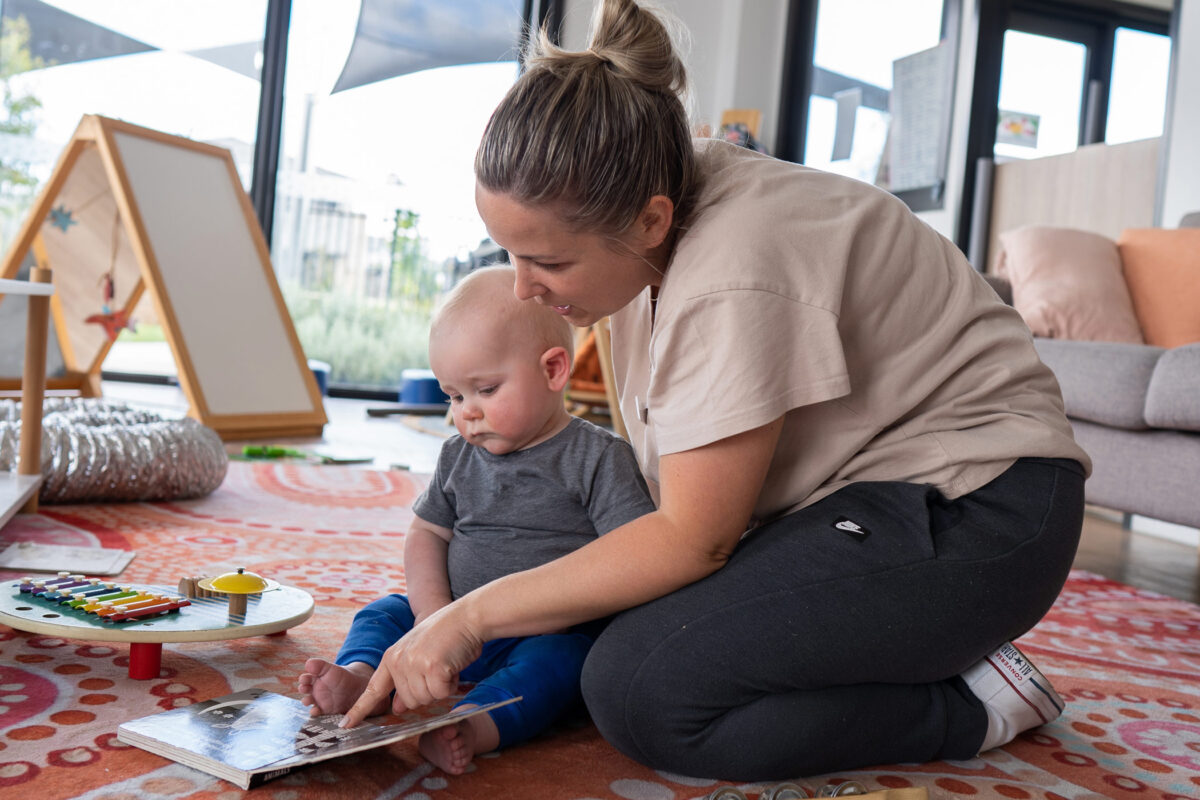
8. Board Last
Most airlines will invite families traveling with young children to board first. However, if you’re travelling with a partner or family members, have them board with your carry-on essentials first so you and your toddler can board last.
Simply put, your toddler will spend less time sitting down and strapped in. Additionally, the cabin can quickly feel a little claustrophobic for toddlers with all the noise and commotion of complete strangers talking and stowing away their carry-on baggage.
9. To Gate Check or Not To Gate Check?
While it’s tempting to baggage check your stroller or baby gear, opt for gate checking if your airline allows it (be sure to research this beforehand). Gate checking a stroller or bulky baby gear will save you a lot of stress and worry as you won’t have to carry your toddler around after checking your baggage. Also, it’ll be waiting for you once you land.
Just be sure to tag your baby gear appropriately and to speak with the gate agent at the airport.
10. Stay Calm and Be Prepared
Be sure to anticipate that there may be challenging moments during the flight. However, instead of agonising over something that may not even happen, try and stay calm and be prepared for unexpected situations.
Bring a small first aid kit, extra nappies, and some changes of clothes in case of spills or accidents. Importantly, keeping calm fosters a positive and grounding atmosphere for both you and your toddler.
Ultimately, flying with a toddler doesn’t need to come with all the stress. With proper preparation, the right mindset, and plenty of patience, you can give your family the best chance of a cruisy flight this summer. After all, holidays are supposed to be for rest and relaxation! So, keep these tips and tricks in mind for a stress-free, memory-filled holiday season. Happy travels!
🍃 To tour one of our beautiful Centres, please click here. Otherwise, check out our website at Explorers Early Learning today!
How to Introduce a New Baby to Your Toddler: A Complete Guide
Do you have another baby on the way? Whether your next bundle of joy is biological or adopted, a newcomer to the family is always a big event! Read on for our comprehensive guide to ensure the smoothest transition possible for your family 👇
Welcoming a new baby to the family is an exciting and emotional time for any parent. However, it’s important to take careful steps with how you break the big news to the ones it’ll effect the most – the children you already have.
While adults understand the gravity of welcoming a new child, toddlers may struggle to grasp the concept. Rushing the news may lead to children feeling overwhelmed, frustrated, and even jealous.
In this post, we outline how to introduce your toddler to a new baby, as well as providing some handy tips for helping them adjust after the arrival.
How to Introduce the Idea of a Biological Sibling
A little brother or sister is a wonderful addition to any family that will inevitably change the household dynamic. Therefore, it’s important to be mindful of when and how to tell your toddler. Experts suggest waiting until at least the end of the first trimester before telling a child there’s a new baby on the way. Once you’ve shared the big news, start preparing them for the actual arrival around 3-4 months before your due date.
While the ‘when’ can be straightforward (especially if you’re showing early), the ‘how’ differs from child to child. Just because your eldest took the news well, doesn’t mean your youngest will be as thrilled.
Likewise, every child is unique, and some struggle to understand abstract concepts. However, there are a few ways to help your toddler prepare:
- Read an age-appropriate book together about welcoming a new baby into the family. This is also best done in the weeks and months leading up to sharing the news so they’re well prepared. Some baby-themed books include:
i) What’s in Your Tummy Mummy? by Sam Lloyd
ii) I’m a Big Sister and I’m a Big Brother by Joanna Cole
iii) Bobo and the New Baby by Rebecca Minhsuan Huang
iv) There’s a House Inside My Mummy by Giles Andreae - Use animals and their young as a reference point – this is perfect if you have a puppy!
- Reassure them with praise and positive reinforcement.
For biological children, you can also use your baby bump! Once your child feels the baby kicking, they’ll begin to get their head around the concept. Ultrasound photos are perfect to extend this experience.
However, don’t be surprised if they find the idea a bit farfetched. Additionally, try not to take it personally if they laugh or shake their head. Often, they need to actually see the baby in person before they’ll believe you!

How to Introduce the Idea of an Adopted Child
Adoption is a huge life decision that can change many lives for the better. However, introducing an adopted child to your toddler presents new challenges. As you don’t have a baby bump or ultrasound photos, you’ll have to get creative to introduce the new face. This is further complicated by the fact they’ll need to understand that their new brother or sister comes from different parents.
A few tips to prepare your toddler for the incoming adopted child include:
- Reading children’s books on adoption together.
- Encouraging your child to ask questions.
- Being clear that all siblings will be treated and loved the same.
- Being open and honest – avoiding the topic can lead to confusion and anxiety for both you and your child.
Above all, children are more perceptive than you might think. So, if you’re shopping around for cots, loading up on formula, or looking at new baby clothes, they’ll clue in that you’re hiding something. Have a sit down and encourage a family discussion. They’ll likely have questions, so it’s important to be well prepared.

Bringing the Baby Home
When the baby finally arrives, there are some steps you can take to ensure your toddler doesn’t feel too overwhelmed:
- Give your toddler a big hug and lots of positive reinforcement before introducing the baby. This is vital for toddlers who often aren’t able to regulate their emotions.
- If you’re giving your older child a gift, tell them it’s from the baby. This is a great way to build connections between your children early on.
- If you’re having friends or family over for the occasion, encourage them to also bring something for your toddler so they can feel involved in the process.
- Hold the baby together. Start by asking if your toddler if they want to hold the baby, and don’t be surprised if they say no. They may even try to pinch or hit the baby. This is completely normal as toddlers may feel excited or overwhelmed. By holding the baby together, you can support your newborn’s head and take control if your toddler becomes uncomfortable or overwhelmed by the experience.
- Involve your toddler in caring for the new baby. Most toddlers love to help! Ask them if they would like to fetch nappies, pick out new sets of clothes, or even quietly sing to the baby if they’re upset.
- Spend some alone time with your child. If all eyes are on the baby, your toddler may feel left out. Taking some time to play a game or read with your toddler while another family member takes care of the baby can do wonders for your toddler’s self-esteem and mindset.
What to Expect at Home
After the initial excitement and novelty wears off, toddlers may still feel a bit lonely. Despite your best efforts to prepare them for the arrival, it can still come as a shock as you shower the baby with the time, love, and attention they need.
Therefore, some toddlers may regress in the first year after a baby arrives by:
- Crying or shouting
- Becoming (extra) clingy
- Acting out towards parents or the baby
- Refusing naps or struggling to sleep/settle
- Forgetting toilet training
Rest assured, these are normal coping mechanisms for toddlers. At first, they may even ask for the baby to be taken back or wish they never arrived in the first place. While this can be heartbreaking to hear, it’s a common reaction from toddlers.
If you find your toddler struggling to accept the situation, there are a few things you can do:
- Acknowledge their feelings. While toddlers aren’t old enough to fully grasp the situation, they are old enough to feel isolation and jealousy. It’s only natural that they feel like their world has completely changed because it has! So, be sure to validate their feelings. Something as simple as ‘I know you’re feeling upset right now, and that’s okay,’ can do wonders for toddlers.
- Schedule some alone time with just you and your toddler every day. This can be as simple as solving a puzzle or playing their favourite game. Just make sure that it’s something they love.
- Reinforce your unconditional love for all your children. While it may seem like it’s falling on deaf ears, the message will eventually get through to your toddler after enough repetition (and plenty of hugs).
- Be positive. This is perhaps the simplest, and in some ways the most challenging, tip on this list. With a crying baby and an emotional toddler, it can feel like the whole world is caving in. However, by staying as positive and smiling around your toddler, you can lead by example.

After enough love, time, and patience, your toddler will slowly begin to accept the situation. Before you know it, they’ll start to appreciate and love the baby. After all, they are their little brother or sister!
However, if you feel it’s seriously impacting your toddler’s development, be sure to contact your healthcare provider as soon as possible.
Overall, welcoming a new child to the family is an exciting and important period for any family. With careful and deliberate steps, you can ensure the experience is the start of a bright new chapter in your family’s story. Always remember to be open, honest, and be patient with your toddler. It’s almost always a shock at first, but with time and proper integration, your children will be forming lifelong bonds before your very eyes.
🍃 To tour one of our beautiful Centres, please click here. Otherwise, check out our website to register your interest at Explorers Early Learning today!
How to Manage Sibling Rivalry: A Parent’s Guide to Peace
Whether it’s the last slice of pizza or who gets the window seat, sibling rivalry can get out of control fast. So be sure to check out our handy tips to get a hold of sibling rivalries before they turn into lifelong competition 👇
One minute they’re playing and laughing together, the next they’re in a screaming match. Sibling rivalry is an inevitable part of raising multiple children. While it’s most prominent between children less than two years apart, it can happen in any sibling dynamic.
While common, sibling rivalry can be challenging for any parent. Therefore, understanding its roots and how to manage it can lead to a happier and more peaceful household.
In this post, we’ll explore the dynamics of sibling rivalry, its underlying causes, and practical strategies for parents and caregivers to foster healthy relationships among siblings.
Is Sibling Rivalry Normal?
Sibling rivalry is a natural part of growing up. Brothers and sisters are children’s first peers. However, unlike in social situations or school, siblings often infringe on children’s most sacred spaces. In other words, the home.
This forces children out of their comfort zone. They’re forced to share, cooperate, and co-exist with another in areas that were once entirely their own. This often takes the form of sharing toys, food, attention, and space!
Children, especially toddlers, are territorial and experience what experts call the ‘mine stage.’ Therefore, having to suddenly share the back seat, play spaces, or even their room is a huge dynamic shift for children. And keep in mind that a new baby or stepsibling is effectively a total stranger to a child.
However, it’s an invaluable lesson that forces children to accept an inescapable fact of life – change. You can’t always control your situation or circumstances, and sibling rivalry forces children to accept this reality and develop coping mechanisms.

What Causes Sibling Rivalry?
While it can be easy to look at sibling rivalry from an adult perspective, try and put yourself in your child’s shoes. For their whole life, your child has been the centre of the universe. They’ve had food all to themselves, toys, and more attention than they could ever need.
Then one day, that all changes. They’re now forced to share and have their source of attention halved overnight. This is a huge and understandably jarring shift for children of any age. In some ways, it can feel like their entire routine has been split down the middle.
And as children get older, these feelings may intensify and grow more complex as children develop differing interests. Understanding that each child has unique needs can help address this, as well as taking a deep dive into the core causes of sibling rivalry:
- Competition for Resources – siblings may consider limited resources like toys, space, or parental time as their own, leading to rivalries when these resources are challenged or divided.
- Identity and Individuality – as children develop their identities, they may compete to establish themselves within the family or for parental approval.
- Developmental Differences – siblings of different ages have distinct needs, leading to competition as they grow and mature where one child may excel in areas while another struggles.
Effective Strategies for Managing Sibling Rivalry
With the causes of sibling rivalry in mind, where do you go from here? While you can’t wave a magic wand to stop sibling rivalry from occurring, there are many ways you can manage it.
1. Encourage Individuality
This is perhaps the most important step to preventing childhood sibling rivalries from growing into lifelong competition. If you’re child loves sports, wonderful! Get out and kick the ball together or sign them up for a local team. If they’re artsy and love to draw, terrific! Get creative with them and encourage this passion.
Importantly, don’t compare or label them purely on these passions. Empower them to thrive in their own special way by celebrating their achievements.
2. Avoid Labels
Have you ever found yourself calling one of your children ‘the sporty one’ or ‘the smart one’? While this may seem harmless, labels inevitably draw comparisons and may lead to inadequacy in children. If one child is struggling academically, seeing their sibling praised as ‘the brainy one’ may hinder their motivation and limit their potential.
Therefore, try to be mindful of the labels you’re using. It’s a natural habit in modern society to feel the need to label and categorise the world around us. It gives a sense of security and comfort to know exactly how things and people fit in. However, people (especially children) are full of complexity and need to have their sense of individuality nurtured from an early age.

3. Stay in Control
No matter what you try, you’ll inevitably have to play referee between bickering siblings. However, children feed off your tone and body language. Therefore, joining the fight won’t exactly help to restore peace to the household.
Instead, try and remain as calm and neutral as possible – don’t play favourites! Over time, you’ll start to pick up cues for when a fight is starting to escalate into aggression and when you need to step in.
4. Set Clear Boundaries
Although sibling rivalries are often trivial and harmless, they can quickly cross the line into physicality. Be sure to be clear and assertive if siblings become aggressive, abusive, or violent with one another.
Set clear boundaries that respect and fairness are non-negotiables in the household and that physical violence is never the solution to an argument. Writing up house rules or having children sign a family contract can help to reinforce these values.
5. Be There to Listen
Emotional regulation is a vital lifelong skill for children. Likewise, fights between siblings often arise from perceived injustice. Therefore, sitting down with your child one-on-one after the conflict is a healthy outlet for children to express and articulate their feelings.
Children are far more likely to hear you out when they feel like they’re being heard and understood, rather than being told what to do. This will also aid in their emotional maturity and strengthen your bond with your child.

6. Quality Time with Each Child
Listening to your child isn’t always enough. Be sure to spend plenty of time one-on-one with your child engaging in their favourite activities, passions, or emerging interests.
While co-operation and spending time as a family is a must, it’s just as important to spend quality alone time with children. Talk with them, listen to their thoughts, and stimulate their budding curiosities.
7. Trust your Children
Despite all your best efforts, sometimes you have to let children work it out themselves. Of course, intervene if arguments become physically or verbally abusive. However, disagreements and discourse are a natural part of life and something your child will have to learn to navigate.
What may seem like a ‘fight’ may just be children using their problem-solving skills to resolve a conflict. This is an incredibly healthy sign for children as they learn to navigate social interactions and compromise. So be sure to congratulate children when they work issues out on their own – this is a huge developmental step!

Overall, sibling rivalry is a natural part of growing up, but with the right guidance and approach, it can be a valuable learning experience for children and parents. By understanding the causes, benefits, and effective strategies for managing sibling rivalry, parents and caregivers can create a nurturing environment where siblings build stronger bonds, empathy, and lifelong bonds.
Remember, fostering healthy sibling relationships takes time and patience. As children grow and change, so will the dynamics of their interactions. The key is to provide a supportive foundation that allows them to navigate rivalry while building a lasting connection, even if you will have to endure the arguments over toy dinosaurs and imaginary injustices.
🍃 To tour one of our beautiful Centres, please click here. Otherwise, check out our website to register your interest at Explorers Early Learning today!
Maternity Hospital Bag Checklist: What to Pack for Childbirth
Are you approaching your third trimester? If so, stop what you’re doing and read through our maternity bag checklist to ensure you and your family are ready for the big day!
Preparing for the arrival of a child is an exciting and sometimes daunting experience, whether it’s your first time or your fifth. Therefore, packing your maternity hospital bag well in advance will save you a lot of time and stress.
In this post, we provide a handy maternity bag checklist for everything you need to make your hospital stay as comfortable and stress-free as possible.
For a PDF of the following list – click here.
When Should You Have Your Maternity Bag Packed?
We suggest having a maternity bag packed and ready by the door (or in the car), around the 36 week mark, which is well into the third trimester. This will give you plenty of time to ensure everything is ready for the big day, night, or early morning (labour often strikes when you least expect it!).
However, every pregnancy is unique. Some women may prefer to have their bags packed earlier, especially if there are known risk factors or signs of preterm labour.
Why is a Hospital Maternity Bag Important?
You may be asking yourself why you need a hospital maternity bag at all. Hospitals are staffed by doctors and professional midwives, so they’ll have everything you need, right?
While the hospital will provide essentials, they won’t provide extra clothing for the baby, books, entertainment devices, snacks, personal toiletries, etc. Although hospitals are great at what they do, they aren’t supermarkets!
Therefore, we recommend sitting down with your partner, family, or doctor to run through the following list and check off any items that need to be added or removed. Once you have your personalised list, set aside an afternoon to pack your bag and prepare for the big day!

Essential Documents and Information
- Birth plan (if you have one)
- Medicare card
- ID and hospital paperwork
- Health insurance information
- List of important phone numbers (family, friends, and support network)
Comfortable Clothing
- Loose-fitting nightgowns or pyjamas
- Comfortable nursing bras or maternity bras
- Recovery pants
- Warm socks and slippers
- Bathrobe
- Loose-fitting outfit to wear when leaving the hospital
Personal Care Items
- Toiletries (toothbrush, toothpaste, shampoo, conditioner, body wash, etc.)
- Hairbrush and hair ties
- Lip balm
- Maternity pads
- Nursing pads and nipple balm (if planning to breastfeed)
- Disposable postpartum underwear and/or full-brief underwear
- Any personal medication if needed

Baby Essentials
- Newborn nappies
- Wipes
- Baby blankets
- Swaddles
- Onesies or baby clothes
- Hat and mittens
- Burp cloths
- Nursing pillow (if desired)
- Going-home outfit for the baby
- Car seat or capsule (installed in the car prior to going to the hospital)
- Infant formula (only if planning to use a milk replacement formula to feed your baby)
Comfort and Entertainment
- Pillows (for extra comfort during labour)
- Extra blanket for partner/support person
- Snacks and drinks for labour and postpartum
- Water bottle with a straw for easy sipping during labour
- Entertainment device (phone, tablet, e-reader, laptop, etc.) and charger
- Camera or video recorder
- Books and/or magazines
Additional Items
- Nursing cover (if desired)
- Nursing-friendly nightwear for easy breastfeeding
- Extra clothes and toiletries for your partner/support person
- Cash or change for vending machines or parking
- Breast pump (if planning to use one)
- Any special items for support during labour such as a TENS machine
Overall, preparing your maternity bag in advance is an exciting milestone as you approach your due date. By having a well-organised and well-stocked bag, you can ensure you’ll have all the essential items you’ll need during labour, delivery, and postpartum.
Remember – every birth experience is unique, so feel free to customise the list based on your preferences and needs. With your maternity bag packed and ready, you can focus on welcoming your precious child into the world.
🍃 To tour one of our beautiful Centres, please click here. Otherwise, check out our website to register your interest at Explorers Early Learning today!
Age-Appropriate Chores for Toddlers: Independence from an Early Age
When can toddlers start pitching in around the house? And what are the benefits for their development? Read on for our full list of age-appropriate chores 👇
Chores may seem like just another part of growing up. However, they teach children responsibility and independence from an early age. But what are some age-appropriate chores for children? And when are they old enough to start pitching in?
In this post, we explore a range of engaging age-appropriate chores for toddlers to learn all about routine, independence, and the importance of working together to achieve a common goal.
When is the Best Age to Start Giving Chores?
Experts suggest that children as early as two years old can benefit from chores on a semi-regular basis, so long as they’re supervised. However, there’s no hard and fast rule for when you can start doling out chores to children. It’s important to consider your child’s developmental stage and maturity to determine whether they’re ready to take on the extra responsibility.
Naturally, a two year old will be limited in how much they can help around the house. Nevertheless, something as simple as packing up after play introduces children to community values. You can then build on these as they progress through early childhood, primary school, and well into adolescence.
1. Putting Away Toys
Encourage your toddler to pick up and put away their toys after playtime. This simple act will save you time cleaning up and teach your child to take responsibility of their spaces.
Additionally, you can extend this to public places and the environment. Something as simple as picking up their rubbish at the park teaches children the importance of sustainability and conservation from an early age.
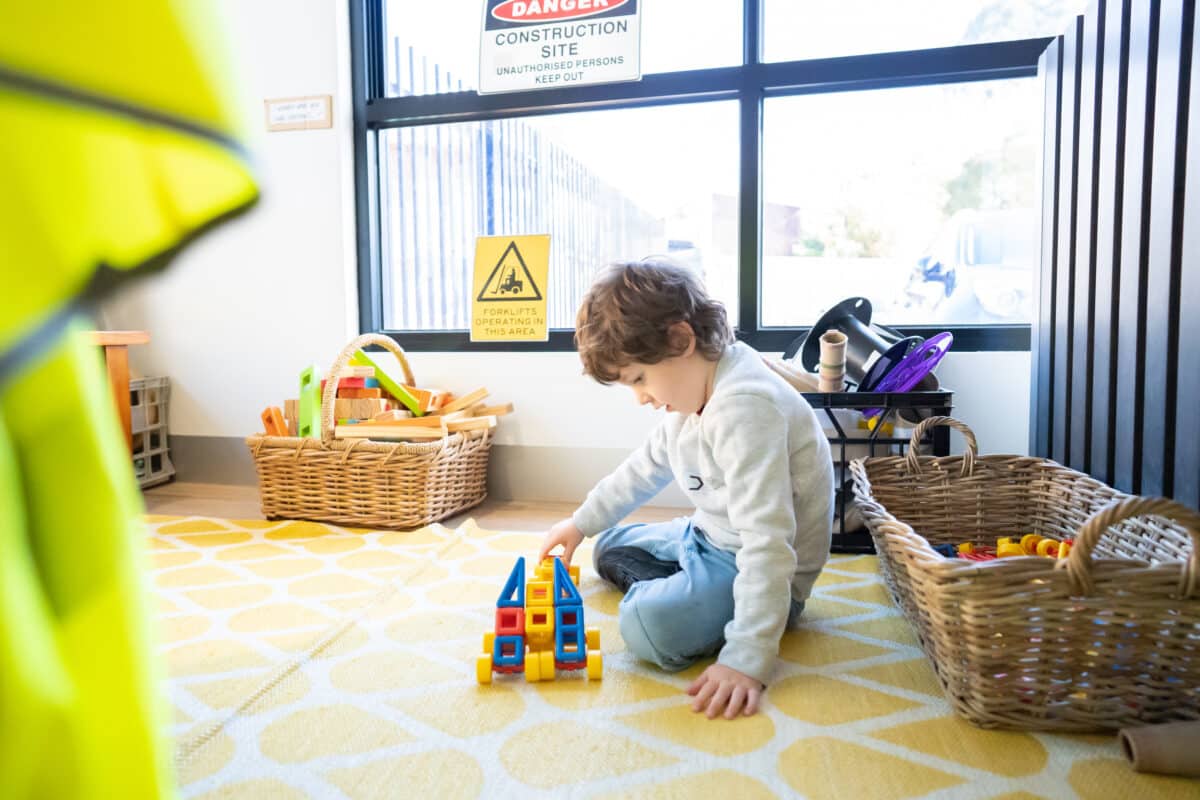
2. Setting the Table
Involve your toddler in the mealtime routine by setting the table together. Teach them to place plates, cups, spoons, and forks on their proper places.
This activity enhances fine motor skills and helps children understand the importance of family meals. In fact, studies suggest that family mealtimes boost children’s motivation, personal identity, and self-esteem. You might be surprised how eager children are to lend a hand when food’s on the way!
3. Sorting Laundry
While folding clothes might be too complex for toddlers, they can certainly help sort the laundry. Ask them to help you separate clean clothes by colour or type. This age-appropriate chore teaches children about categorisation and enhances hand-eye coordination.
You can even make a game of it. Invite them to sort all the red clothes into one pile and the blues in other.
4. Watering Plants
Toddlers love playing with water, so why not focus that enthusiasm into a chore? Give your child a small watering can and show them how to water indoor plants or a small garden outside.
This activity teaches children about the life cycle of plants and caring for all living things. Better yet, you can expand this experience by planting seedlings or starting a herb garden. This small act introduces your child to the wonders of nature and the importance of empathy.
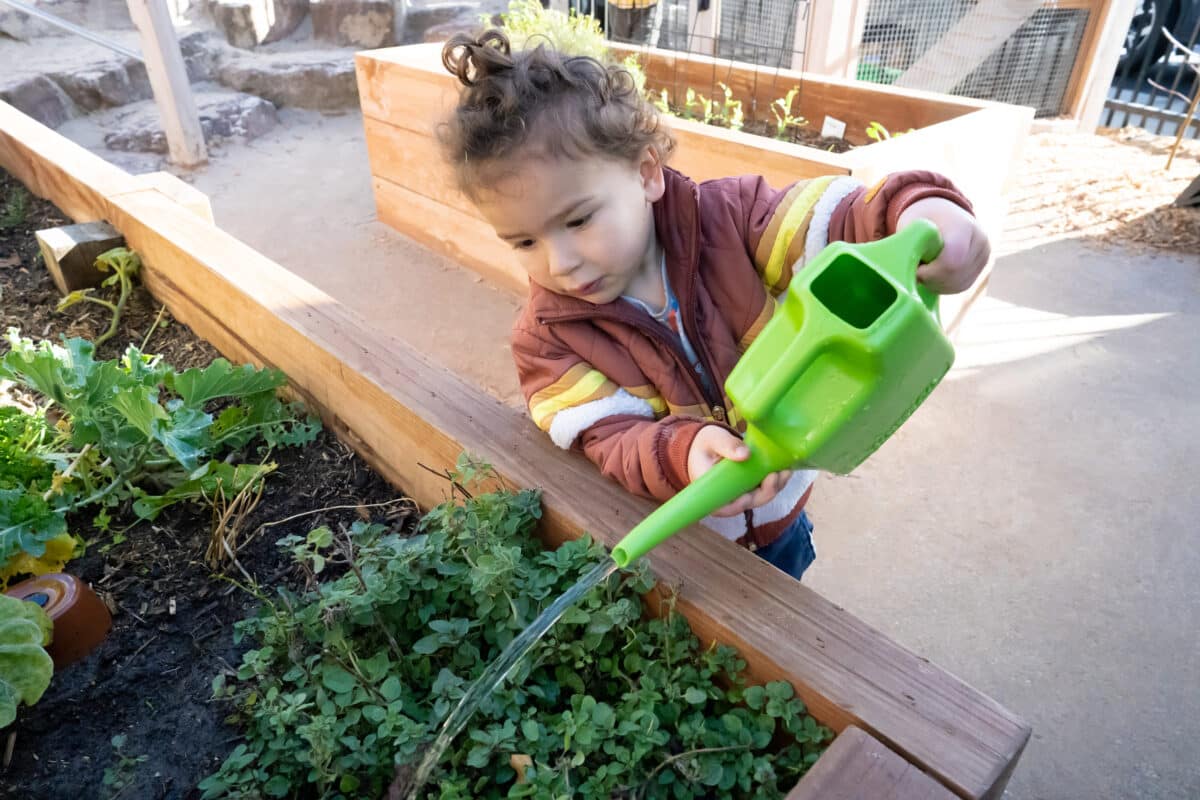
5. Wiping Surfaces
Give your toddler with a damp cloth and show them how to wipe surfaces such as tables, countertops, or windowsills. It won’t be perfect, but their efforts contribute to keeping the house clean and germ-free, while also honing their fine motor skills.
Just be careful not to assign them anything too dirty. Dust can kick up and may trigger nasty allergies or asthma. As with all items on this list, always supervise your child when engaging in these age-appropriate chores.
6. Feeding Pets
If you have pets, involving your toddler in their care is a wonderful way to teach responsibility and proper care. Help your child pour the right amount of food or water into your pet’s bowl.
This chore highlights compassion, empathy, and the importance of caring for all living things. Not to mention it makes for some great additions to the photo album!
7. Picking up Books
Encourage your child to tidy their bookshelf by picking up and organising their books. Likewise, demonstrate how to place books upright and stack them neatly. This chore nurtures children’s love for reading while also bringing a sense of orderliness to play areas.
You can also use this exercise to encourage reading, storytelling, and writing! Children love story time, so you can use this experience to combine responsibility and imagination.
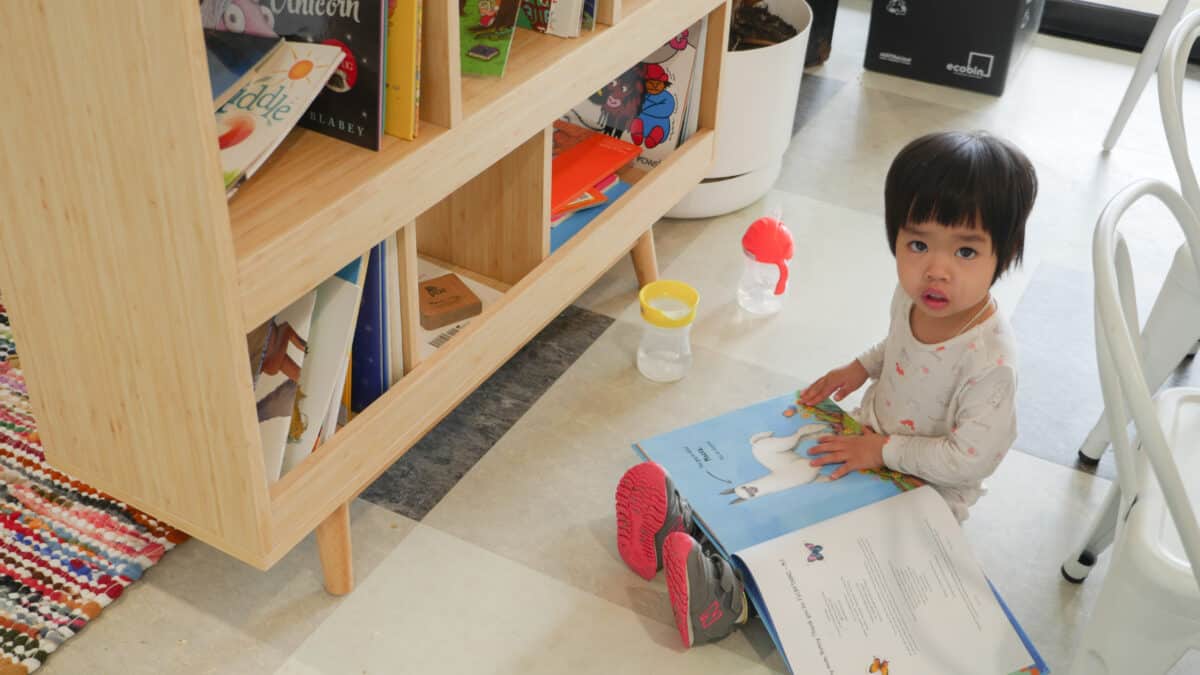
8. Help Prepare Meals
Invite your toddler to help prepare meals by peeling fruits, washing veggies, or rolling out dough. If your child isn’t quite ready for these tasks, something as simple as scooping cereal into the bowl provides a tremendous sense of independence.
Ultimately, age-appropriate chores are a fantastic way for toddlers to embrace independence, responsibility, and a sense of accomplishment. By making chores engaging and fun, it won’t be long before your child is actively participating in more complex household tasks.
Remember, it’s essential to offer guidance, praise their efforts, and make chores a positive experience. So be sure to empower toddlers and as they grow into responsible individuals who’ll be helping you bring in the groceries before you know it!
🍃 To tour one of our beautiful Centres, please click here. Otherwise, check out our website to register your interest at Explorers Early Learning today!
9 Fun Rainy Day Activities in Melbourne
Looking for some fun rainy day activities with the children? Read on for our must-visit attractions around Melbourne this winter 👇
Rainy days in Melbourne don’t have to be dreary! Instead of letting the cold weather get you down, embrace the opportunity to get the children out of the house and exploring Melbourne’s vibrant indoor attractions. Not only do these activities get children active, but they also get them engaging with the community and learning all kinds of physical and social skills.
Whether you’re a local or just visiting Melbourne for the weekend, here are our top 9 rainy activities for those wintery days.
1. Melbourne Museum
Take a trip through history and culture at the renowned Melbourne Museum. Explore fascinating exhibits, including natural history, art, science, and Aboriginal culture. Through interactive displays and engaging programs, the Museum offers an educational and entertaining experience for all ages.
Better yet, the Museum introduces children to the vast and fascinating history of our planet. Importantly, that history is pretty cool – filled with amazing creatures and natural events.
If you’re planning on visiting the Museum, be sure to check out the Museum’s Pauline Gandel Children’s Gallery. This exhibition is for babies all the way up to age 5, and features hands-on exploration, play-based learning, immersive environments, and unique exhibits the little ones are sure to love!
2. Live Theatre
Worried your child is spending too much time on screens? Take them to the live theatre instead! There are loads of age-appropriate performances for children around Melbourne, from magic shows to Disney on Ice.
Not only are live theatre shows a wonderful day out of the cold, but they also teach children valuable social skills. Unlike television shows or movies that can often overstimulate children, live theatre requires children to exercise concentration and patience, while also boosting their attention spans.
3. Aquarium
Dive into an underwater wonderland at SEA LIFE Melbourne! A trip to the Aquarium introduces your little one to a whole new world filled with breath-talking natural creatures and environments. From majestic sharks to adorable penguins, your child is sure to enjoy this aquatic day out.
Explore interactive exhibits, walk through tunnels surrounded by captivating sea creatures, and learn about the importance of ocean conservation. And who knows – you might just inspire a future marine biologist.
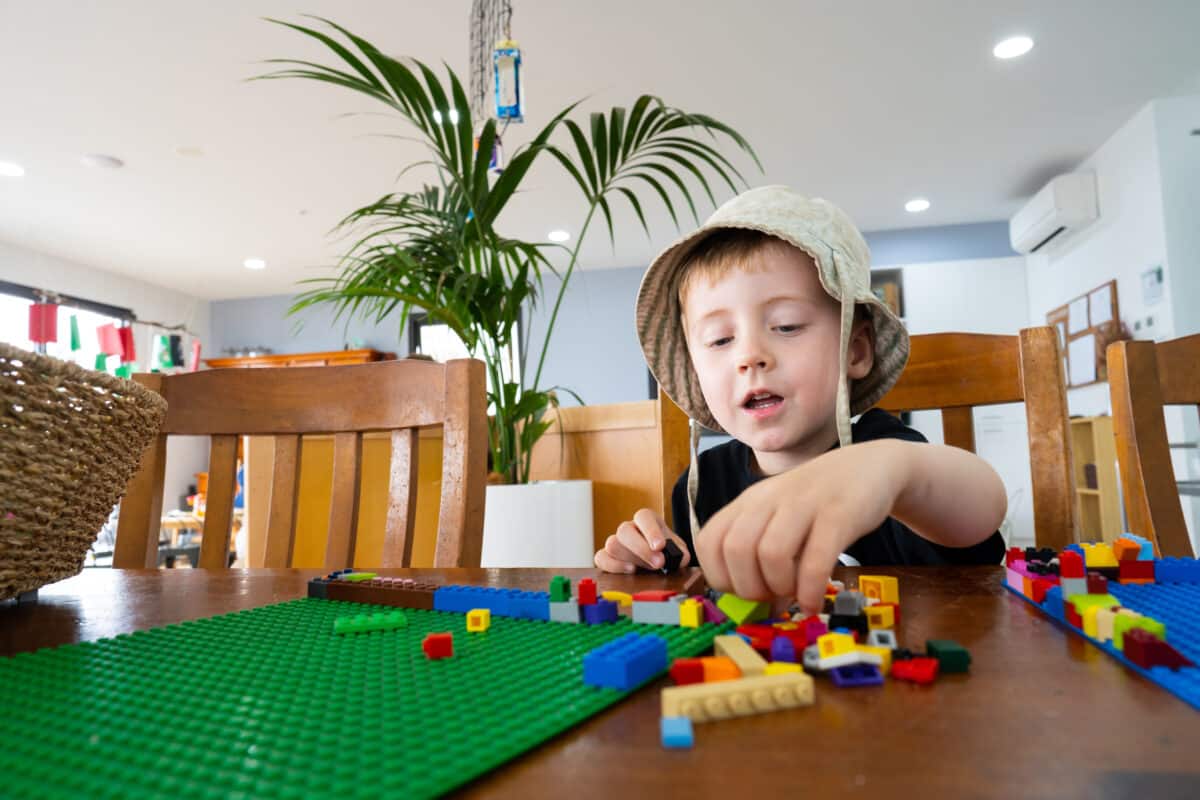
4. Legoland
For Lego enthusiasts over three years of age, the Legoland Discovery Centre is a must-visit this winter. Legoland is an open-ended experience filled with creativity and imagination through an abundance of Lego-themed activities and attractions.
Together, you and your child can build and race Lego cars, explore miniature Lego cities, and construct anything their not-so-little imaginations can conjure – the possibilities are endless. Additionally, Lego boosts children’s fine motor skills and problem-solving abilities, helping them become better learners.
5. Cook Together
Rainy days provide the perfect opportunity to stay indoors and indulge in some culinary creativity. Gather the children, choose a recipe, dust off the whisk and embark on a cooking adventure as a family.
Cooking is also a great learning experience for children. They engage with all kinds of smells, textures, and chemical reactions from the boiling of the pot to the oil floating in water. You can also use this as an opportunity to explore measurements and reading instructions. Additionally, cooking helps children identify different fruits and vegetables, food storage, and general kitchen safety.
Importantly, it teaches children that food can be tasty and good for you.
6. The Library
Escape the rain by delving into the exciting world of books at one of Melbourne’s many public libraries. Whether you’re raising a little bookworm or just trying to get them away from the screens for an afternoon, libraries offer a peaceful and stimulating environment for children of all ages. Introduce them to captivating board books, discover new authors, or participate in children’s book club discussions and events.
The library is also a great way to meet local families to organise play groups so your little one can make new friends!
7. Get Crafty
A day inside is the perfect opportunity to challenge your child to get crafty. With just a few materials, you can finger paint, stamp craft, or make some clay masterpieces. Arts and crafts are always a hit with children, as it encourages them to explore their creativity and see a project through from start to finish. In other words, it teaches them the nature of cause and effect.
The best part is there’s no right or wrong way – just get your child’s imagination active!

8. ArtVo
Unleash your creativity and immerse your child (and yourself) in the mind-bending optical illusions at ArtVo Melbourne. This interactive art gallery provides a unique experience where you become part of the artwork.
Strike a pose, take amazing photos, and let your imagination run wild as your child explores the captivating 3D paintings. This is the perfect way to introduce children to the mind-bending nature of perspective, geometry, and how things aren’t always as they seem.
9. Museum of Play and Art (MOPA)
Experience a world of creativity and play at the Museum of Play and Art (MOPA). This interactive experience offers hands-on exhibits and activities designed to ignite the imagination of children and adults alike. From sensory play areas to art workshops, it’s a rainy day haven for budding creatives.
And don’t take our word for it. Visit Victoria called MOPA ‘Australia’s most acclaimed Children’s Museum.’ This is a day out you don’t want to miss – they also make a great coffee!
Overall, rainy days in Melbourne don’t have to be dull. With these 9 fun indoor activities, you can make the most of these precious moments with your child, while also staying dry. From live theatre and museums to playing with Lego, there’s something for everyone to enjoy. So why not embrace everything that Melbourne has to offer and create some unforgettable memories?
🍃 To tour one of our beautiful Centres, please click here. Otherwise, check out our website to register your interest at Explorers Early Learning today!
Healthy (and Tasty) Easter Treats for Children
Easter is a time for family, fun, and treats! However, it’s also a time where we can get carried away with sugar-filled, highly processed chocolates. Read on for our comprehensive list of 7 creative treats for your child’s basket this Easter!
Easter is a time for family, fun, and of course, treats! A little chocolate won’t hurt, but it’s easy to get carried away and load up the little one’s baskets with sugar-filled, highly processed eggs and chocolate bunnies.
If you’re looking for a healthier option this year, there are plenty of creative options for making an Easter basket that’s still filled with fun and tasty treats. Here are seven healthy Easter treats for your child’s basket!
1. Rabbit-Shaped Sandwiches
Sandwiches are a great way to get creative while also providing a healthy meal for the little ones. Simply use a bunny-shaped cookie cutter over multigrain sandwiches filled with delicious fillings like ham, turkey, cheese and plenty of veggies.
You can also incorporate the Easter theme into the fillings like egg salad, cucumbers and shredded carrot! Feel free to make them as creative as possible, as children are more likely to engage with healthy eating when it’s colourful and fun.
2. Carrots and Hummus
Carrots are a fitting snack for Easter, as they’re the Easter Bunny’s favourite treat. Experiment with veggies to make little bunnies, creative platters or baby carrot flowerpots. Additionally, hummus comes in a range of flavours and variations for even the fussiest of eaters.
Best of all, hummus is full of nutrients, fibre and protein which are essential for growing bodies. If you’re going for storebought, just avoid anything too spicy for the little ones! There’s loads of recipes online to make your own, which can be a wonderful bonding experience.

3. Fresh Fruit
Fill your child’s Easter basket with a variety of colourful fruits, such as sliced apples, bananas, oranges, berries or grapes. Fresh fruit is rich in vitamins, minerals, and antioxidants which are vital to children’s physical and psychological development.
Additionally, fruits – especially grapes and berries – are naturally sweet, making them a great alternative to lollies and chocolate. Just add a small container of grapes or berries to your child’s basket, or even freeze them for a fun and refreshing treat.
4. Popcorn
Popcorn is an underrated healthy snack. It can be salty or sweet and it’s full of fibre and important antioxidants. Pop or your own or opt for store bought, just be sure to read the labels carefully. Many store-bought popcorns are filled with sugar, butter and salt.
You can then portion out the popcorn and get decorative with colourful packaging, ribbons and cards!
5. Homemade Easter Treats
Children love helping out in the kitchen – they just don’t like to clean up the mess! Get the little ones involved in the kitchen to make a whole range of healthy easter treats such as carrot cake bites, hot cross buns, muffins, biscuits, banana bread, energy balls or fruit leather.
This is a great way to get creative in the kitchen while also providing children with a healthier alternative to store-bought treats that are often filled with loads of sugar and nasty preservatives.

6. Chocolate Covered Fruit
Remember, creating a healthy Easter basket is all about balance and moderation. Therefore, coating healthier foods like strawberries, bananas, kiwi fruit or watermelon is a great way to get the best of both worlds. It’s still chocolate, but not in the dense blocks or eggs you’ll find in a typical Easter basket.
This is also a great opportunity to get creative with platters, colours and designs. And remember – you don’t need to cover the entire fruit. A half-covered strawberry or the tip of a mandarin slice is a tasteful, and aesthetic, way to manage your child’s chocolate intake.
7. Sugar-free Chocolate
If pure chocolate is a must, consider a sugar-free (or low sugar) option. These are made with natural sweeteners such as stevia, without comprising the taste. The lack of sugar will result in less hyperactivity, sugar crashes, and trips to the dentist in the long term.
In recent years, sugar-free alternatives to everyday treats have exploded in popularity. Most supermarkets now stock ample sugar-free and low sugar alternatives in their health food aisles.
Just remember to always get your little one to brush after eating even these sugar-free treats. For tips on how to get your little one brushing, check out our blog post here.
Overall, Easter baskets don’t have to be a pit of sugar-filled, processed chocolate and sweets. In fact, they’re an opportunity to teach children about healthy eating and to broaden their palette. Through a mixture of homemade and storebought Easter basket treats, you can ensure your child indulges their sweet tooth.
Happy Easter!
🍃 To tour one of our beautiful Centres, please click here. Otherwise, check out our website to register your interest at Explorers Early Learning today!
How to Get Children Excited About Toothbrushing
Does teeth time become tantrum time in your household? Check out our blog for our top tips to get the little ones brushing.
From the moment children’s teeth erupt, they need brushing. Experts say children’s teeth need cleaning twice a day – and the same goes for adults! While this sounds fine in theory, does teeth time become tantrum time in your household?
Head shakes, crying, and firmly shut mouths are daily struggles for parents when teaching children the brushing basics. In this post, we’ve listed some fun ways to motivate your child to brush from newborns all the way to their first visit from the Tooth Fairy!
0 – 6 months
Although baby teeth don’t usually emerge until around six months, you can gently wipe their gums with a damp washcloth or gauze pad. This is best done after feeding and before bed. Importantly, a toothbrush or toothpaste isn’t needed at this age. Be soothing and gentle, as babies are at a delicate stage of development.

6 – 18 months
This age is often where the trouble begins, as it’s when the toothbrush enters the picture. This can be particularly problematic for highly sensitive or autistic children. However, small changes to your brushing routine can ease the experience for any child:
- Sing songs while brushing
- Use lukewarm water – children aren’t ready for toothpaste at this age, and water’s that’s too cold can irritate sensitivity
- Use a mirror to ensure slow circular motions in all corners of the mouth
- Play music (soothing for younger children, upbeat for older)
- Be gentle, but thorough
Furthermore, children love to imitate adults. Brushing your teeth alongside them is a great way to get them to take the initiative. Additionally, children thrive on independence. Tying their shoelaces or pouring their cereal are big steps for the little ones. Therefore, framing toothbrushing as a grown up activity can be a huge motivator.
Lastly, always remember to always replace brushes every three months, only use a pea-sized amount of age-appropriate toothpaste and remind children to never swallow toothpaste.
18 months – 3 years
By now, children are fully immersed in the experience, with the toothbrush, low-fluoride toothpaste and flossing (when teeth touch at around two to three years old) all a part of the equation. Naturally, this may make children apprehensive with all the new routines and sensations.
Remember, toothbrushing is repetitive – needed twice every single day – so it’s understandable if children get bored, as they often avoid difficult tasks. They prefer what’s familiar and easy. Also, young children don’t understand long term consequences for their actions. If their teeth aren’t rotting that second, they don’t see the problem.
Some activities to get children brushing at this age include:
- Star charts – a reward system to encourage brushing for consecutive days.
- A fun toothbrush – try your child’s favourite character, colour or design.
- Bring in a stuffed toy – children feel in charge when ‘brushing’ their favourite toy’s teeth, so getting teddy involved can be the difference.
- Apps – there are loads of apps from Disney, the Wiggles and many more which offer an immersive brushing experience.
- Picture books – there are countless board books about the importance of brushing teeth which pairs perfectly with story time.
- Get the family involved – children look up to family members, so get brothers, sisters, mum, dad, grandparents or cousins into the picture – whoever it takes to get them brushing!

3 – 6 years
At this age, children are more attuned to their environment. Therefore, you can start adding more complex elements like games, educating them about why toothbrushing is important and, of course, the Tooth Fairy! Although children don’t start losing their baby teeth until around age six, you can begin introducing them to the idea. Be sure to remind them that the Tooth Fairy only accepts clean teeth!
Nevertheless, there’s no one method or life hack to get children brushing. Each child is different and responds to encouragement in their own unique way. Therefore, it’s best to experiment and borrow elements from different approaches to discover what works best for your child.
By around six, children develop the necessary responsibility and motor skills to brush independently. Of course, this doesn’t mean they’ll magically start brushing morning and night without issue. Rather, managing children’s healthy brushing habits continues well into adolescence. If unchecked, poor habits can bleed into adulthood and lead to a variety of physical, psychological, social, and even financial issues for your child.
Overall, getting children brushing early in life is crucial to developing long-term hygiene habits. After all, it’s more than just to maintain a good smile, although that is a nice perk.
To tour one of our beautiful Centres, please click here. Otherwise, check out our website to register your interest at Explorers Early Learning today!
How (and Why) to Raise a Child Inventor
Is your child going through an inventing phase? It’s more important for early childhood development than you might think. Read on for all the benefits of encouraging little inventors!
Children love inventing. It’s the perfect mix of imagination and creation. They have an idea, make concept art, work with different materials and end with a finished product. Additionally, inventing develops children’s problem-solving, fine and gross motor skills, manual dexterity and intelligence.
However, inventing is more than just a learning exercise. History is full of children creating everyday inventions from toy trucks to braille! So, to celebrate Kid Inventors’ Day, we look at the benefits of encouraging little inventors, as well as listing some famous child inventors for inspiration.
How to Encourage Inventing at Home
There are several ways to promote invention at home. And remember, not all inventions require crafts or elaborate parts. Many are simple alterations to existing objects. Moreover, just creating concept art is a huge step for the little ones!
A few ways to encourage children to invent are:
- Ask them to identify an everyday problem
- Write a story about an inventor (real or imagined)
- Invite them to draw an invention
Likewise, inventor kits have exploded in popularity in recent years. These are containers or boxes filled with everyday household items and loose parts. Inventor boxes present an evocative safe space for children to explore their senses, while also flexing their creative muscles. They can be bought pre-made or you can create your own in just a few easy steps. You’d be surprised at what children can create with the most basic materials!
Why is Inventing Important for Children?
Inventing is the ultimate form of creativity, as it encourages children to think critically and use their motor skills to turn an idea into a physical form. Importantly, this process engages both sides of their brain, which is fundamental to cognitive development. Moreover, creativity has emerged as a priceless skill across all industries, not just those in creative fields.
At Explorers, our Reggio Emilia inspired philosophy encourages play-based learning goals through project-based education. Therefore, if a child has an idea or passion in a specific area, our Educators actively motivate them down this innovative path. Children need to enjoy learning and be free to explore and create in their own unique way.
Educators, therefore, act as guides. They keep children from straying too far into the fanciful and make sure to ask the right questions. Importantly, they reward curiosity. This is integral to the Reggio Emilia approach, and early learning more broadly.

Famous Child Inventors
Toy Truck – Robert W. Patch (Age 6)
Robert Patch was just six when he invented the toy truck out of shoeboxes, bottle caps and a nail. While it sounds simple, Patch became the youngest person in history to receive an official US patent. Importantly, Patch’s invention didn’t require elaborate parts or intricate designs – just a few materials and a good idea.
Crayon Holder – Cassidy Goldstein (age 11)
In 2006, Cassidy Goldstein was named Youth Inventor of the Year by Intellectual Property Owners Education Foundation. This was thanks to her ingenious Crayon Holders, which allowed broken crayons to be reused through a retractable plastic tube. Cassidy’s invention solved a common problem children faced daily, as well as drastically reducing crayon waste.

Popsicle – Frank Epperson (Age 11)
Sometimes, a great invention isn’t enough. At age 11, Frank Epperson accidently invented the popsicle (icy poles) by leaving a sugary mixture out on a cold night, the wooden mixing stick frozen inside. Yet, it was a story of perseverance for Epperson. It took over a decade pitching his product around the neighbourhood, beaches and a fireman’s ball to finally get the project off the ground. Children can learn a lot from Epperson, as hard work does pay off!
Braille – Louis Braille (age 15)
By age five, Louis Braille was blind in both eyes. However, this didn’t deter the brilliant young inventor. At the time, reading and writing systems for the visually impaired were costly and inefficient. So, a 12 year-old Braille embarked on developing an entirely new system. By 15, he’d invented the raised-dot system we know today. Braille is now standard across all blind communities, and it’s not just for books. It can be found on signs in public spaces, keypads, restaurant menus, door signs, medicine labels and so much more.
Overall, inventing is a wonderful way to get children’s brains buzzing. In these early years, children start to understand that they’re part of a wider community. Importantly, they learn that their ideas and innovations can impact the world around them. So be sure to encourage and reward children’s ideas, no matter how silly they might seem. You never know – that electric toothbrush sticky taped to a fork might just be the next million dollar idea!
🍃 To tour one of our beautiful Centres, please click here. Otherwise, check out our website to register your interest at Explorers Early Learning today!
7 Handy Tips to Reduce Food Waste
Is your bin filled with expired food? Read on to save your hard-earned money while also teaching your child about healthy eating and sustainable habits!
Every year, 7.6 million tonnes of food is wasted – and that’s just in Australia. What’s worse, 70% of food that ends up in landfills and incinerators was perfectly inedible when discarded. To fight food waste, the United Nations established the International Day of Awareness of Food Loss and Waste Reduction to campaign for sustainable solutions to food waste from the farm to your plate.
To contribute to the conversation, we’ve listed seven handy tips to reduce food waste and save your hard-earn money. These aren’t life-changing adjustments, but something as simple as buying an ugly cucumber is the first step to introduce your child to sustainable habits and healthy eating.
1. Buy Ugly Food
Firstly, keep an eye out for disfigured or misshapen fruit and veg at the supermarket. A shocking amount of fresh produce is discarded by farmers that don’t meet supermarkets aesthetic standards, with 45% of all produce being thrown away. Ugly produce is often disregarded by shoppers and left to the reduced bin, with many of that nutritious produce thrown out as supermarkets discard up to 10% of their food.
Thankfully, some supermarket chains have identified this needless waste through marketing ugly fruit separately, such as Coles ‘I’m Perfect’ range and Woolworths ‘the Odd Bunch.’ Importantly, this demonstrates how consumer spending habits directly influence the policies of the big players in food waste.
2. Make a List
Have you ever wondered why milk is always at the back of the store and the produce is waiting for you at the front? Or why the chocolate bars are tantalisingly placed at the checkout? The design of supermarkets and the placement of their products are specifically engineered to make you buy on impulse, therefore making a list is vital to ensure you only buy what you need.
Additionally, a list promotes mindful shopping. When buying those birthday cake flavoured biscuits, ask yourself – do I really need this? Often you realise you actually don’t, and they end up going stale before eventually meeting the bin.

3. Keep Leftovers
Meal-prepping and freezing meals is a wonderful way to reduce your household food waste as you can prepare meals on weekends or cook several days worth a few nights a week.
A recent survey found that Australians throw away in one in five bags worth of groceries, which is equivalent to around 312kg per person each year – equalling $2,500 wasted annually per family.
Pre-cooking meals reduces waste, saves money on takeout and promotes healthy eating habits for your child (you can get them involved in the cooking too!).
4. Understand Use-By and Best-Before Dates
Many people don’t understand the difference between use-by and before dates. While use-by dates are required on meat products and cannot be sold after this date, best-before dates are only an estimation of when food will be at its highest quality. Essentially, this is guess work by the manufacturer, which can result in consumers conflating best-before and use-by dates.
One study estimated that 24% of Europeans believed food is unsafe to eat beyond its best-before date. Some UK supermarket chains have even taken steps to prevent this misconception, with Aldi, Sainsbury’s, Tesco and M&S removing best-before dates on many produce, milk and yogurt lines. This is in line with research outlining that the three most wasted foods are fruit, veg and bread.
5. Buy Local
Your local farmers market or baker are a fantastic way to reduce waste and support your local community. Local food markets control their own food production and distribution chains, so they’re not constrained by supermarket aesthetic standards or large-scale transit concerns.
Additionally, local traders have a better understanding of how much they need to make and what sells. Moreover, they often have better systems in place to handle leftovers, such as allowing staff to take home leftover stock or even giving it away before closing.

6. Donate
There are countless not-for-profit organisations that specialize in taking leftover food for homeless shelters, compost or animal feed. While some supermarkets partner with these groups and even allow customers to take discarded produce for animal feed, they are often hampered by legal waivers and forms.
Organisations such as FareShare, Foodbank Victoria and Empower Australia are just a few foodbanks that are always looking for donations!
7. Grow your Own!
Starting a veggie garden is a great bonding opportunity for you and your little one. It teaches them the wonders of nature, sustainability and the benefits of clean eating (and you control the pesticides).
We love gardening at Explorers. Our Educators and children maintain our herb and veggie gardens, and families are welcome to take home produce to enjoy! Children engage in the planting process and even harvest the veggies, which are then cooked by our chefs and enjoyed in daily meals.
In conclusion, food waste is an unavoidable part of food production, but we can take steps to reduce it from the farm to your fridge. You don’t have to become a food waste advocate, but the first step is stopping at the supermarket to ask yourself – do I really need garlic bread flavoured potato chips?
🍃 To tour one of our beautiful Centres, please click here. Otherwise, check out our website to register your interest at Explorers Early Learning today!
7 Sentimental DIY Father’s Day Gifts
Looking for something more meaningful than a new power drill? Read on for some DIY Father’s Day gifts that are sure to make Dad’s special day even better!
It’s almost Father’s Day! The commercials are filled with specials on toolboxes, neckties are on sale and you’re glaring at that homebrewing kit you bought last year that’s never been used.
With more gift choices now than ever, we’ve done away with the quirky socks and ‘World’s Best Dad’ mugs to list some wonderfully sentimental – and environmentally friendly – DIY gifts that will mean so much more to Dad, Grandad or the special person in your life than a new power drill.
1. Father’s Day Picture Frame
In a world of smartphones, computers and screens seemingly everywhere, it can be easy to forget the simple magic of a framed photograph. A family photo is the perfect addition to a bedside table or office desk, so why not make it extra special?
With some basic materials, you and your little one can create a unique picture frame for Dad in a few easy steps! Once you’ve assembled your desired frame, just add glue and decorate. For example, you can use sequin, glitter, buttons, stamps, old newspaper scraps, seashells or even twigs! The possibilities are endless, so get as creative as you like.
2. Artwork
Do you have a little Michelangelo at home? If so, artwork is the perfect gift for Dad while also providing your child a sense of accomplishment. Whether it’s a portrait, a sketch of a special moment or just some squiggly lines, Dad’s love seeing their children’s artistic spirit come to life.
Moreover, you can print drawings onto t-shirts, mousepads, posters, Father’s Day cards and fridge magnets. Not to mention they make a fine addition to a custom picture frame.
3. Wooden Coaster
If you come across some fallen branch, why not take it home for a DIY project?
All you need is a thick enough branch (at least 9cm in diameter), a saw, a brush, some sandpaper (heavy and fine) and clear varnish. It’s a surprisingly simple process with remarkably personal results:
- Cut the thick parts of the branch with a saw into desired coaster sized discs.
- Sandpaper the top and bottom. Use a heavy paper for the wider areas and a fine paper for the harder to reach nooks – don’t sandpaper the bark on the outside.
- Coat all around the wood with clear varnish and let it dry.
This one requires strict parental supervision, however your child can pitch in by helping apply the varnish with a brush or even team up on the saw. Additionally, you can personalise a coaster further by using a wood burner to write out a message or signature.
For a more in-depth guide, click here.

4. Bookmark
A custom bookmark is the perfect gift for bookworms this Father’s Day. All you need is some coloured card, scissors, ribbons, a hole punch, some texters and an idea.
DIY bookmarks are a wonderful gift because they can be effortlessly personalised. If he’s a keen fisher, make a fishing rod. If he’s a foodie, make a spatula. Does he love golf? You get the idea. Lastly, you can go the extra mile by writing out a special message or poem to make this bookmark stand out!
5. Clay Creation
Clay play is a deeply sensory experience for children because they use both hands to feel and work the material. Moreover, it’s a popular form of messy play which aids in children’s emotional and physical developmental in an environmentally friendly way. Just make sure to look out for non-toxic clay and always supervise your child during clay time.
You can create mugs, bowls, pencil holders, paperweights or anything your child desires. A dragon? A mini football? A mould of their hand? The only limit is their imagination because clay is the perfect blank canvas. Mistakes are easily reversed by mushing the art and starting over. However, make sure you take finished products to a ceramist to be professionally fired in a kiln as conventional ovens don’t get nearly hot enough to fire clay.
6. Plants
Need something to put into that clay-fired plant pot? Plants are a sentimental and environmentally friendly Father’s Day gift without breaking the bank. Cacti are a Father’s Day favourite, as are bonsai trees, spider plants and dragon trees.
In recent years, Jade plants – also known as money plants – have exploded in popularity. This is likely because they’re considered lucky, require little care and make the perfect addition to a study, bedroom or office space. Just give them water, light and lots of love and they’ll last for years!

7. Baked Goods
If you think dad will force a smile at all the above, why not keep it simple? Baking your special someone their favourite treat is a foolproof plan because homemade food is so much more personal than grabbing the first thing you see at the supermarket.
You can personalise baked goodies with edible toppers and food dye to celebrate their favourite sports team, hobby or tv show. However, baked goods won’t last (at least you hope they won’t!), so you can always pair them with another gift like a homemade plate or mug filled with freshly brewed coffee.
In conclusion, Dad, Grandad or whoever you celebrate the day with deserves to be spoiled on their special day. Whether it’s a framed drawing, a prickly cactus or a tray of brownies, be sure to thank them for everything they do and to celebrate the occasion together. After all, they deserve so much more than a new screwdriver.
🍃 To tour one of our beautiful Centres, please click here. Otherwise, check out our website to register your interest at Explorers Early Learning today!